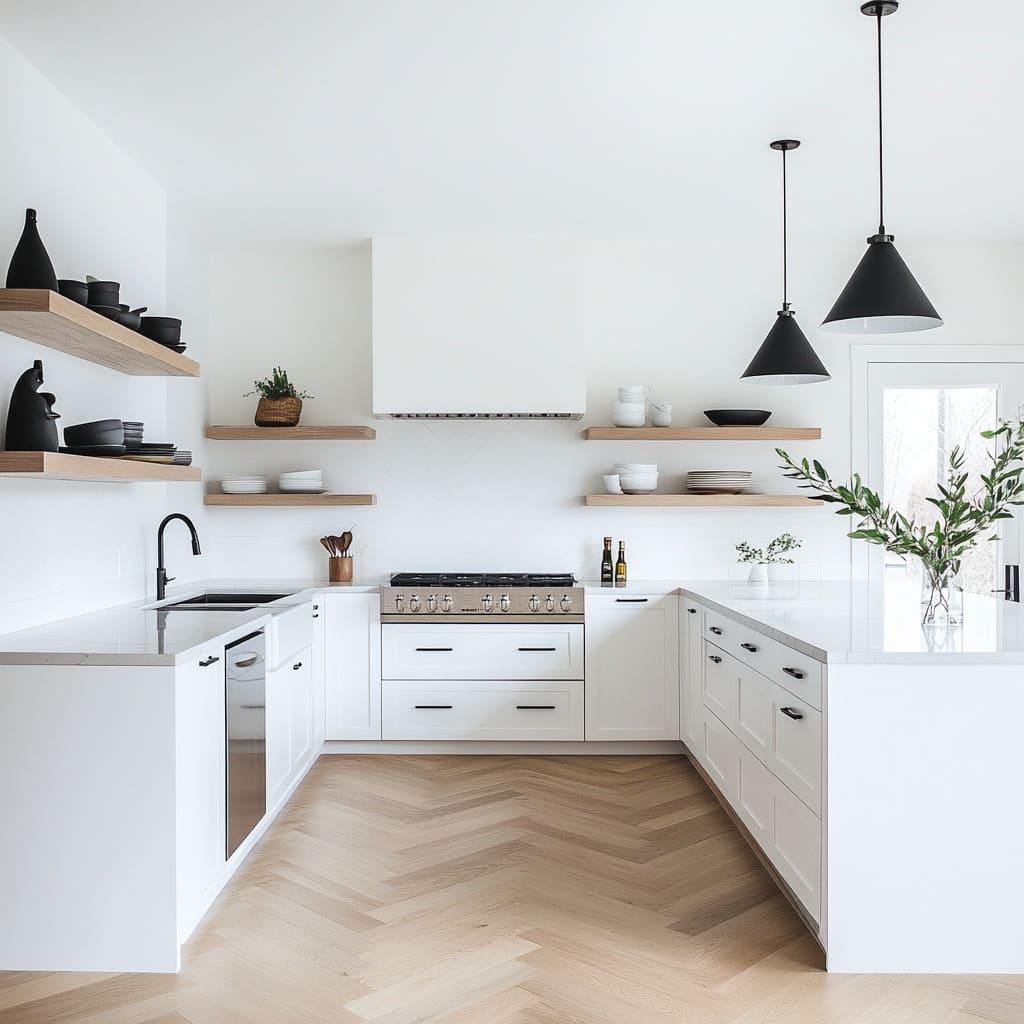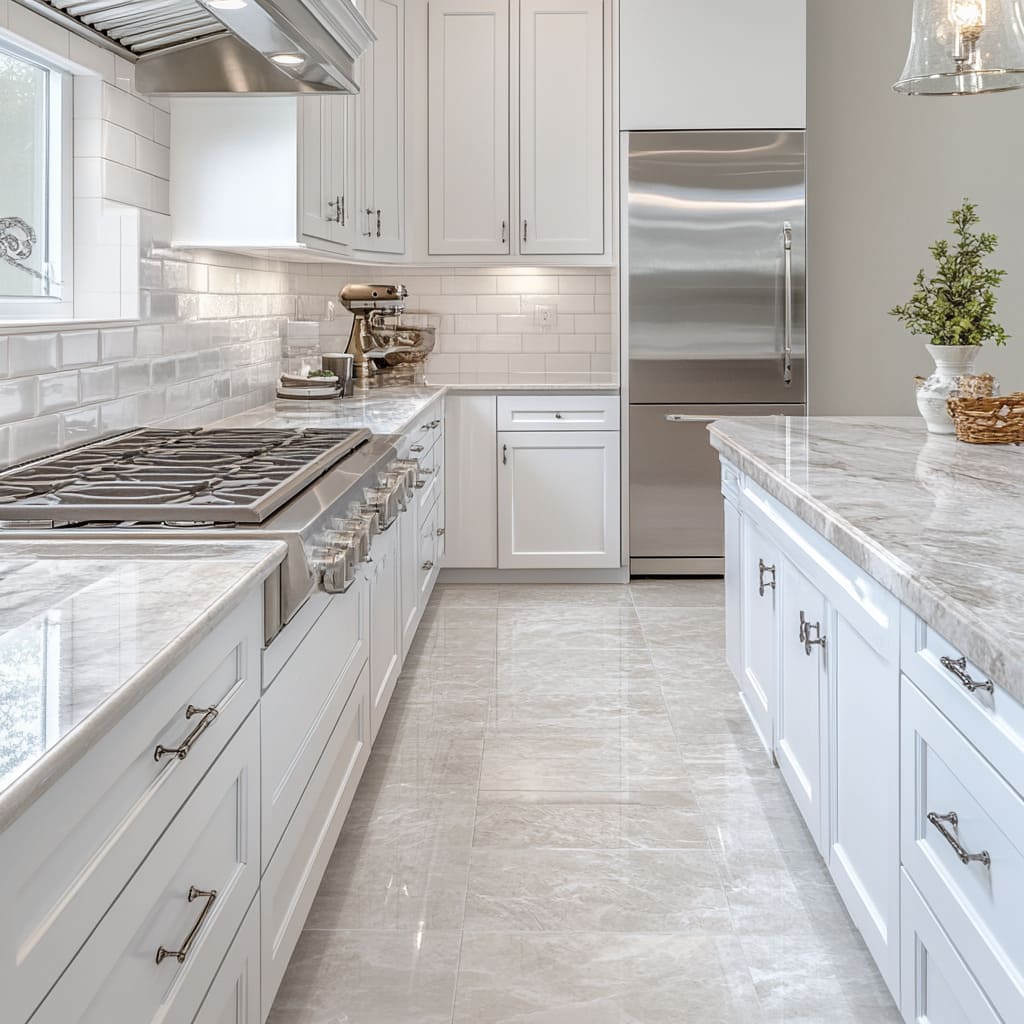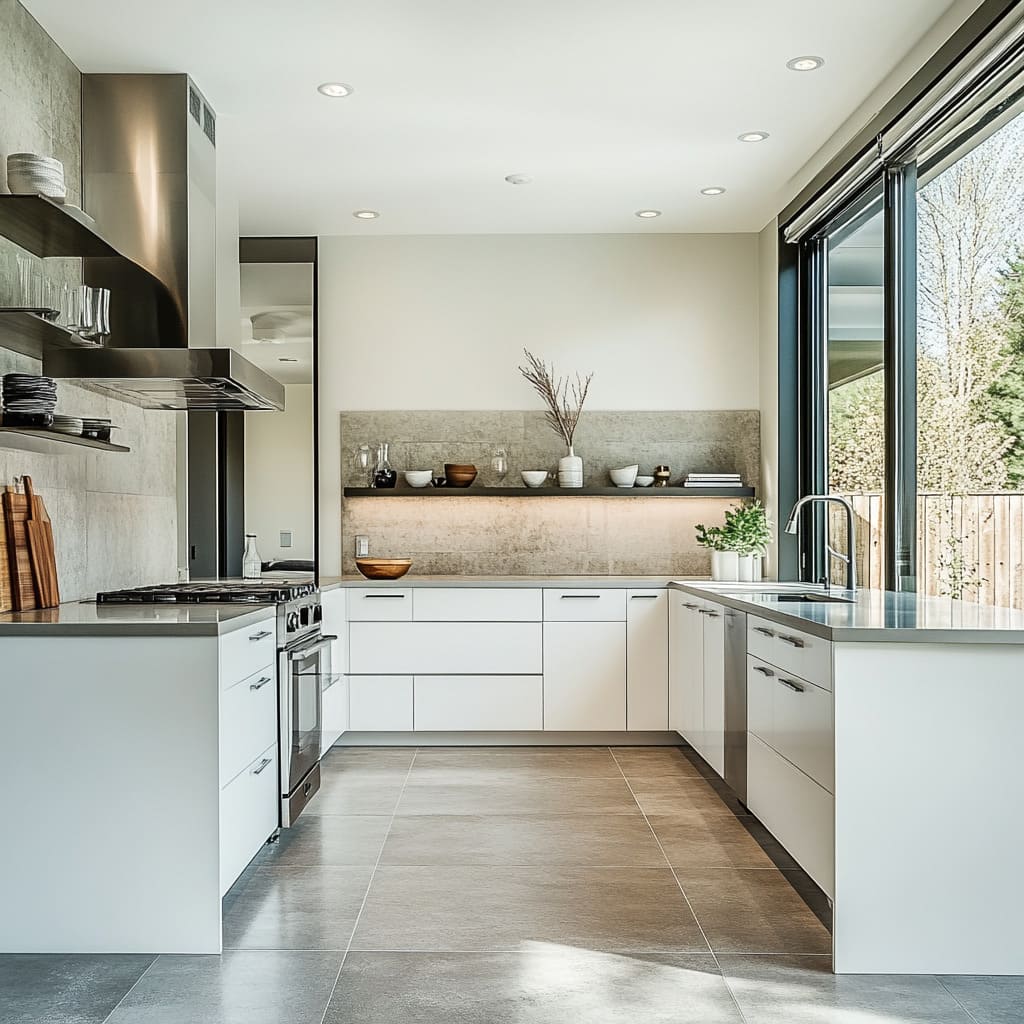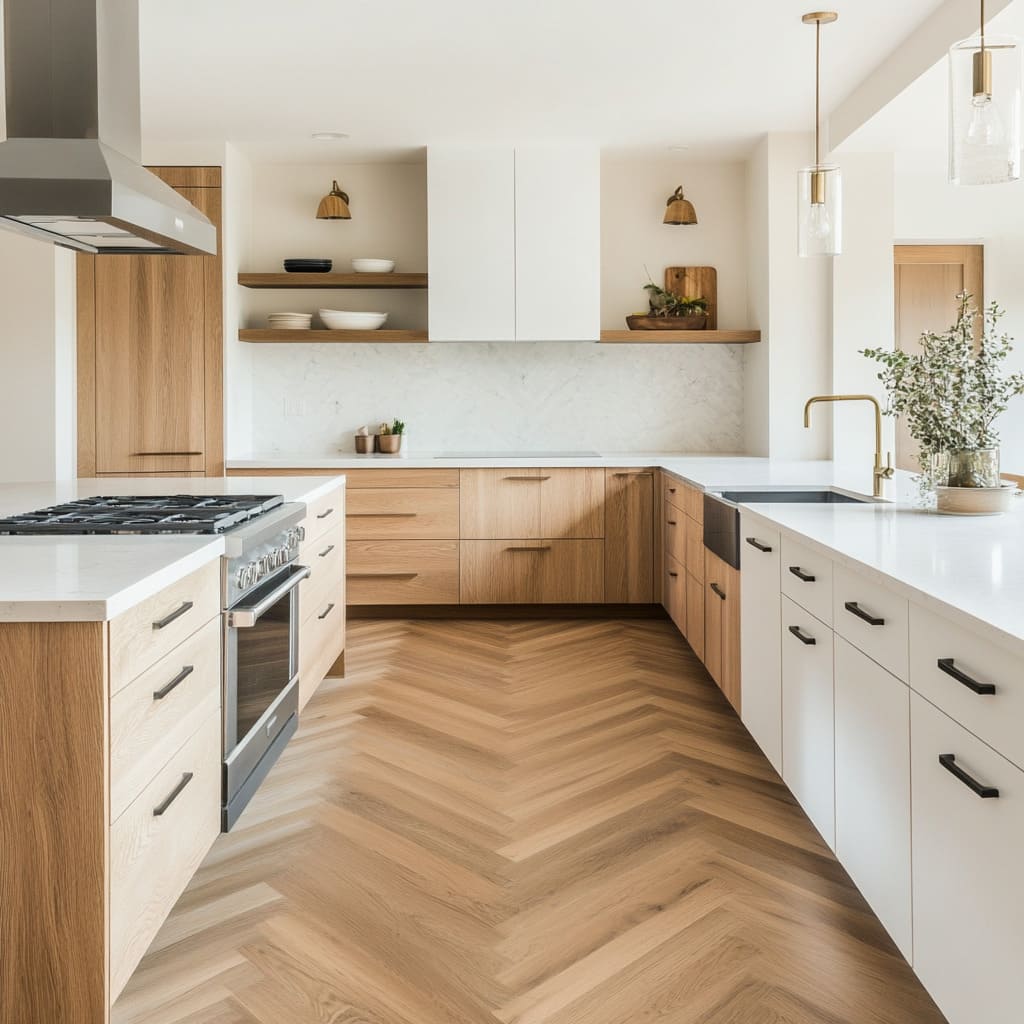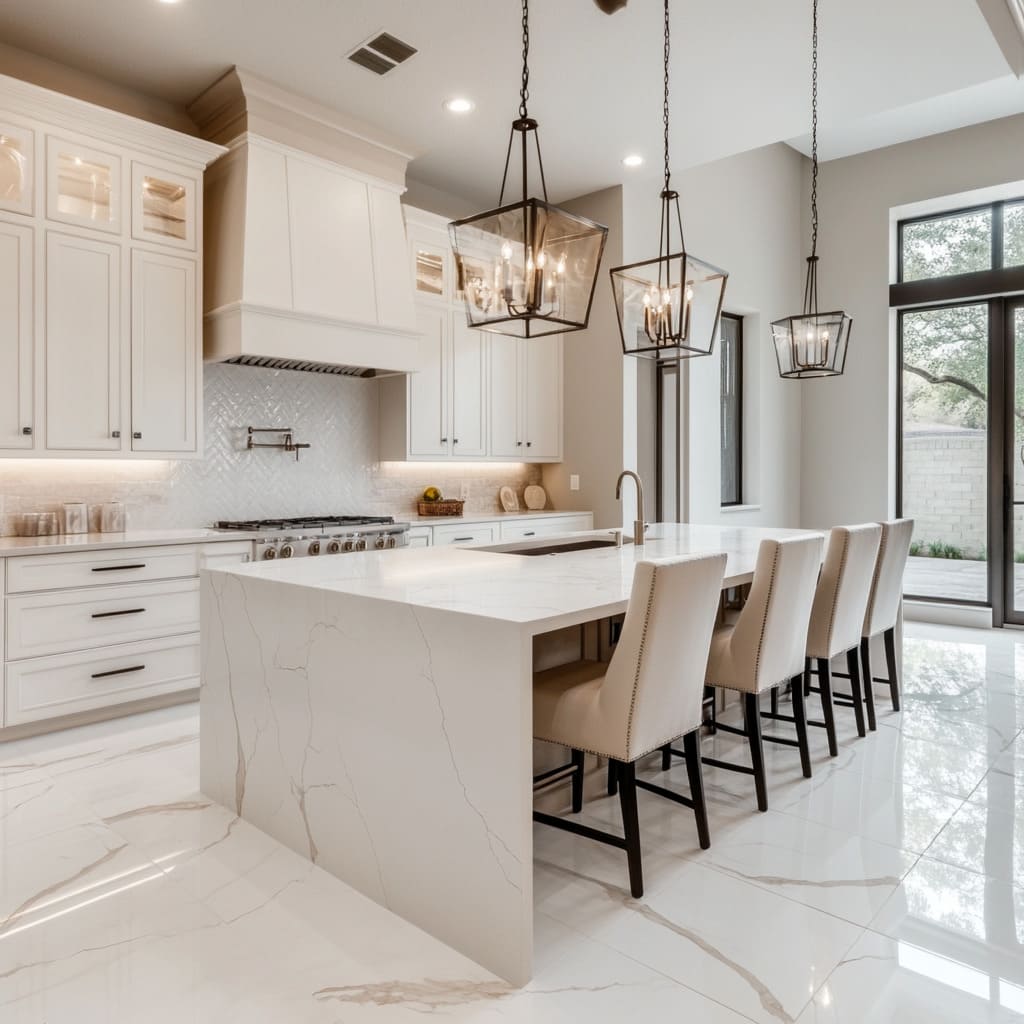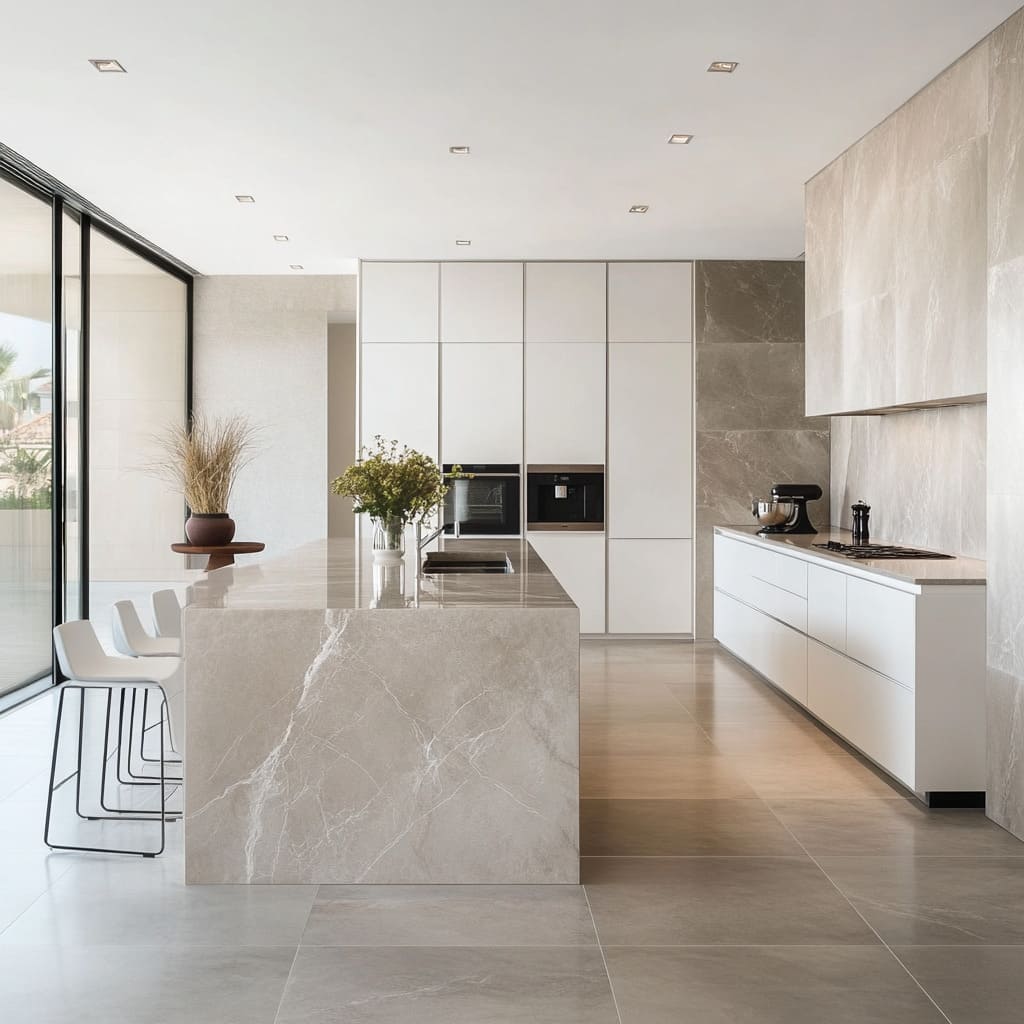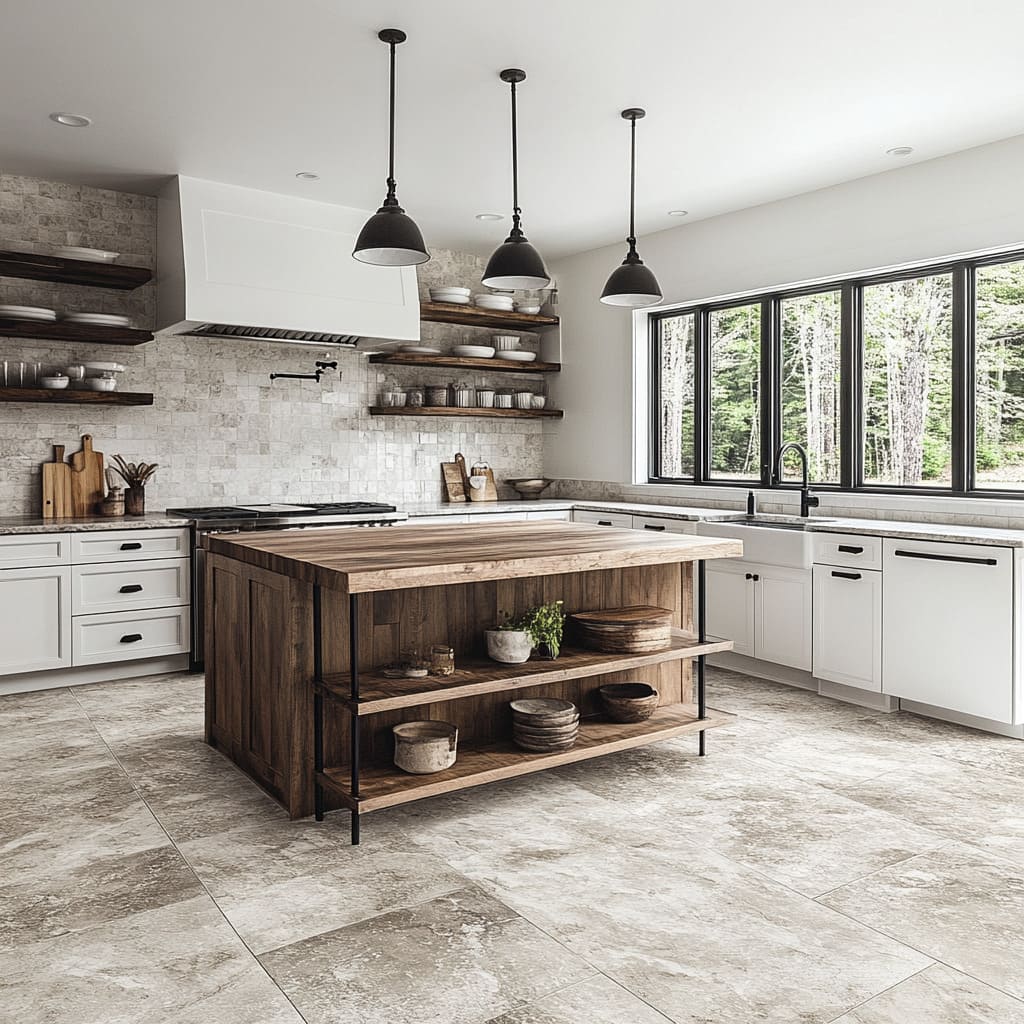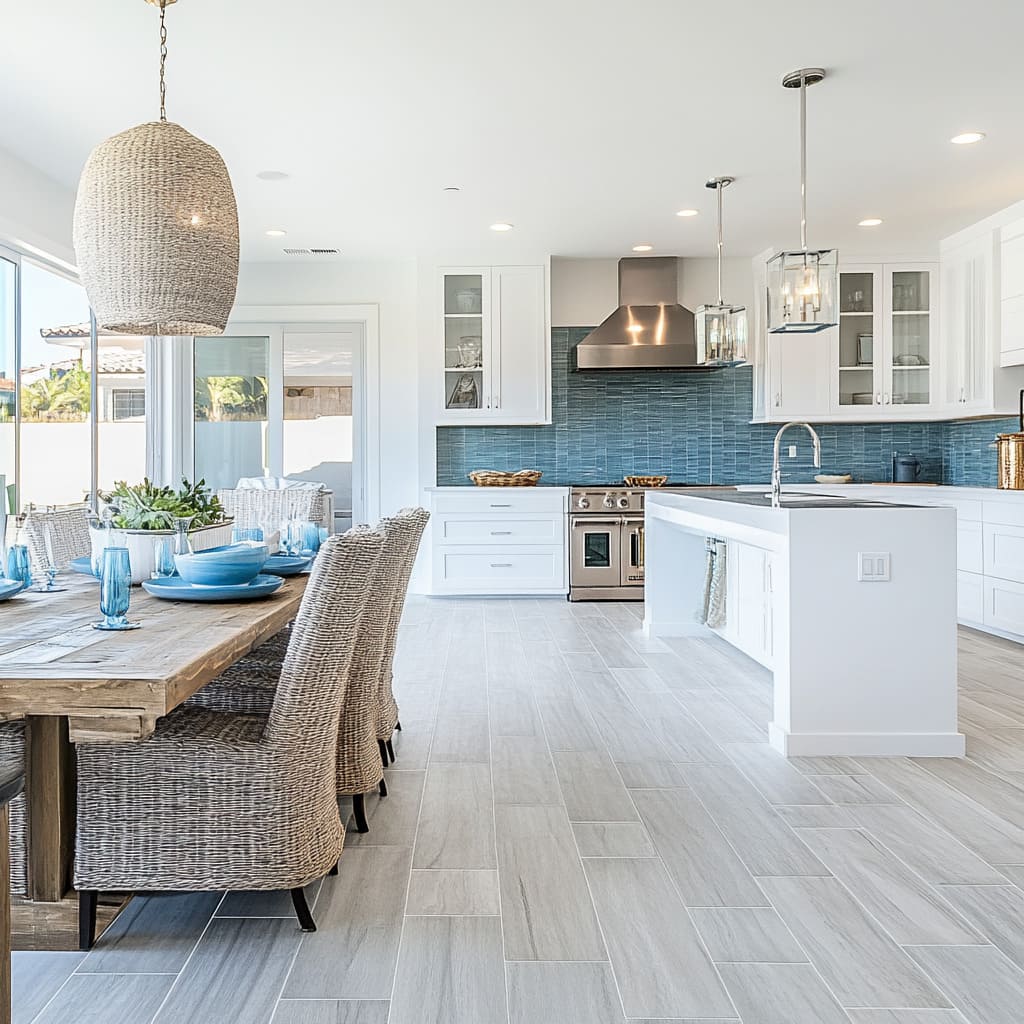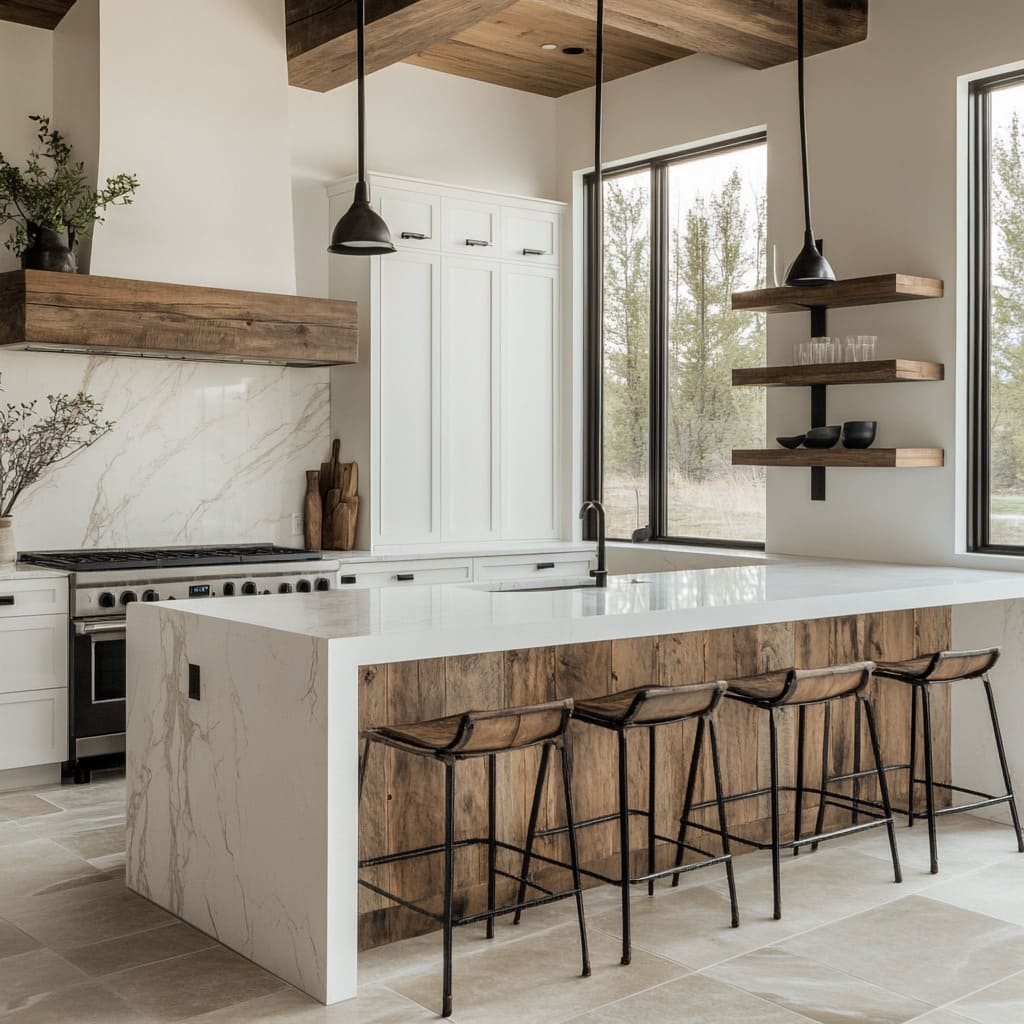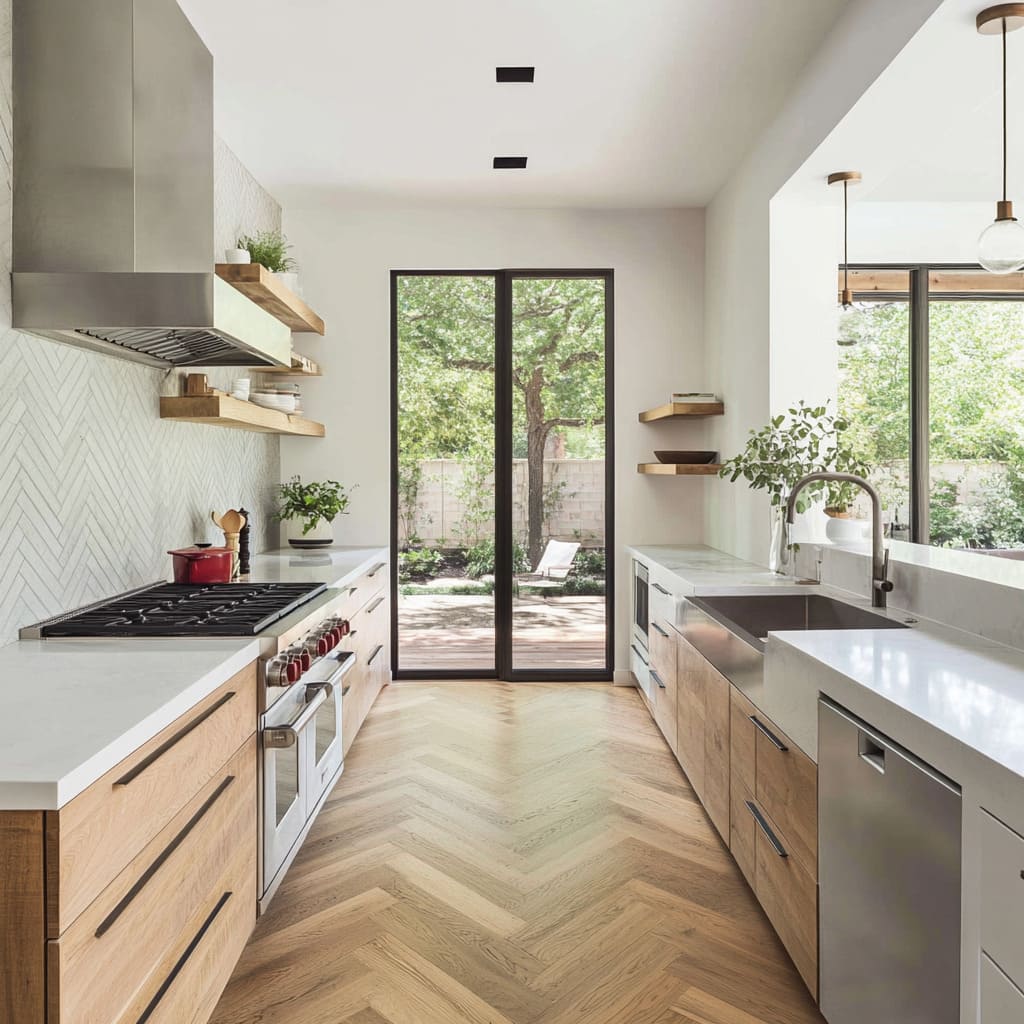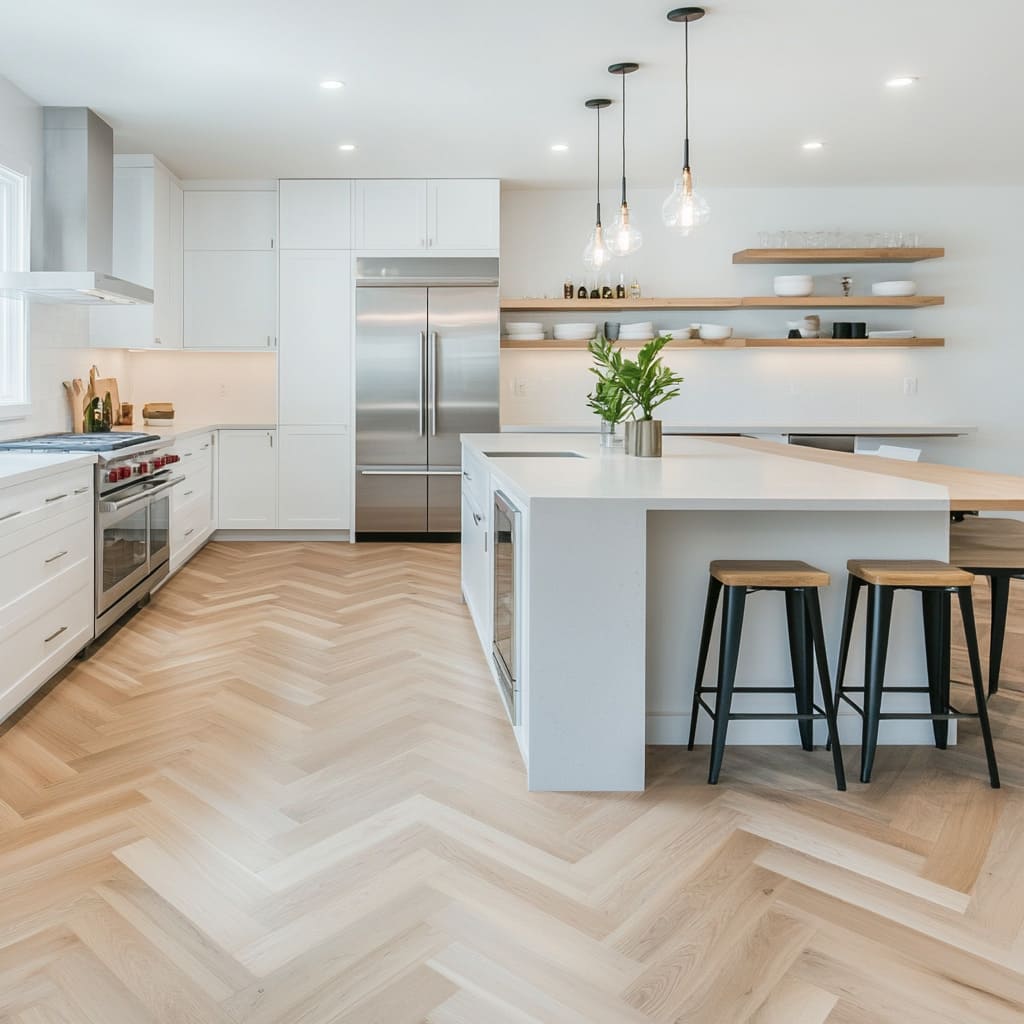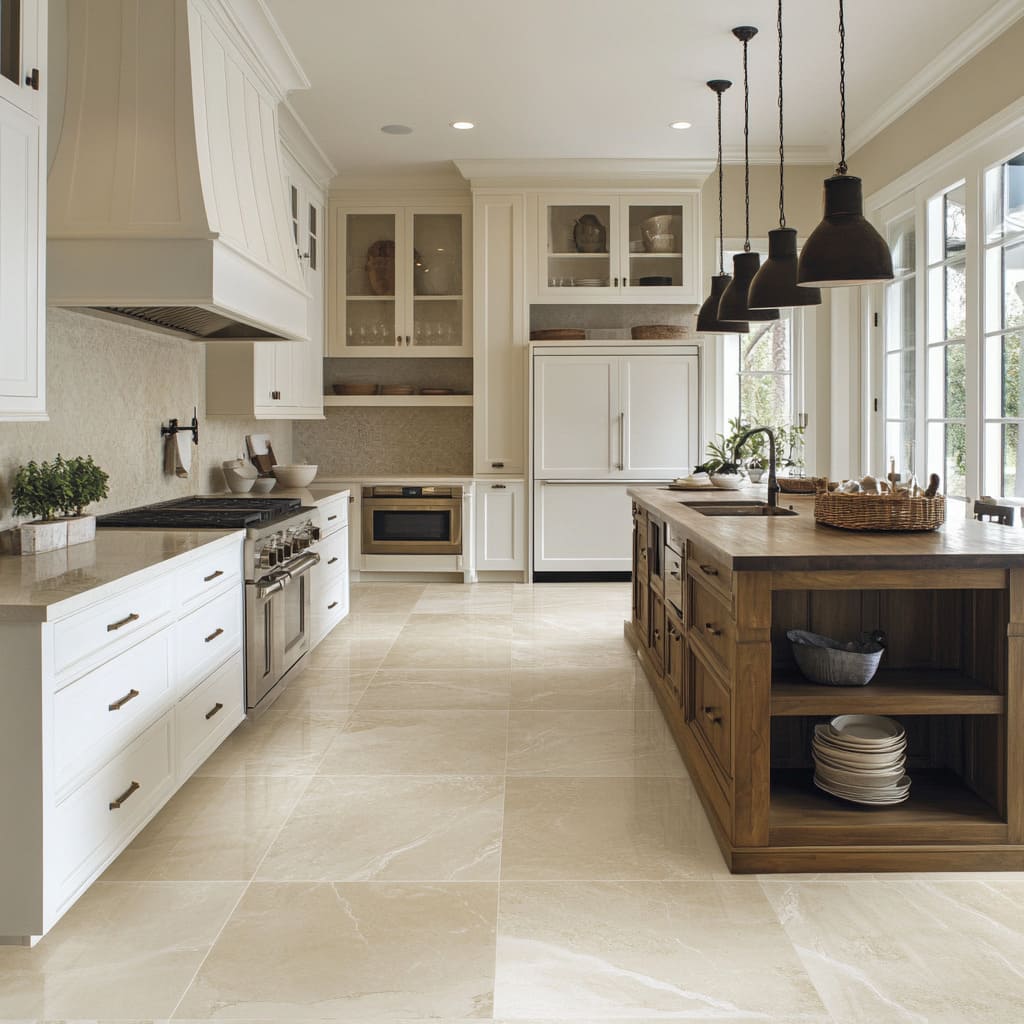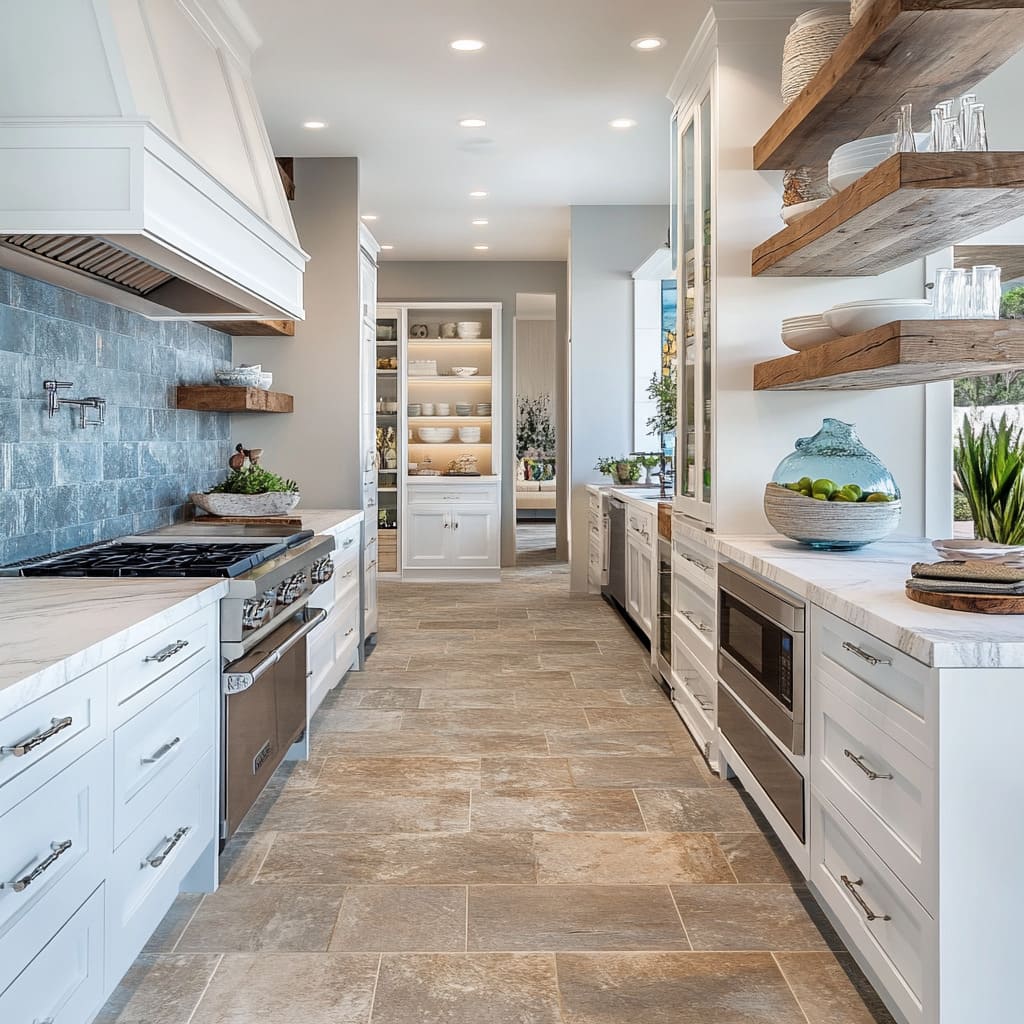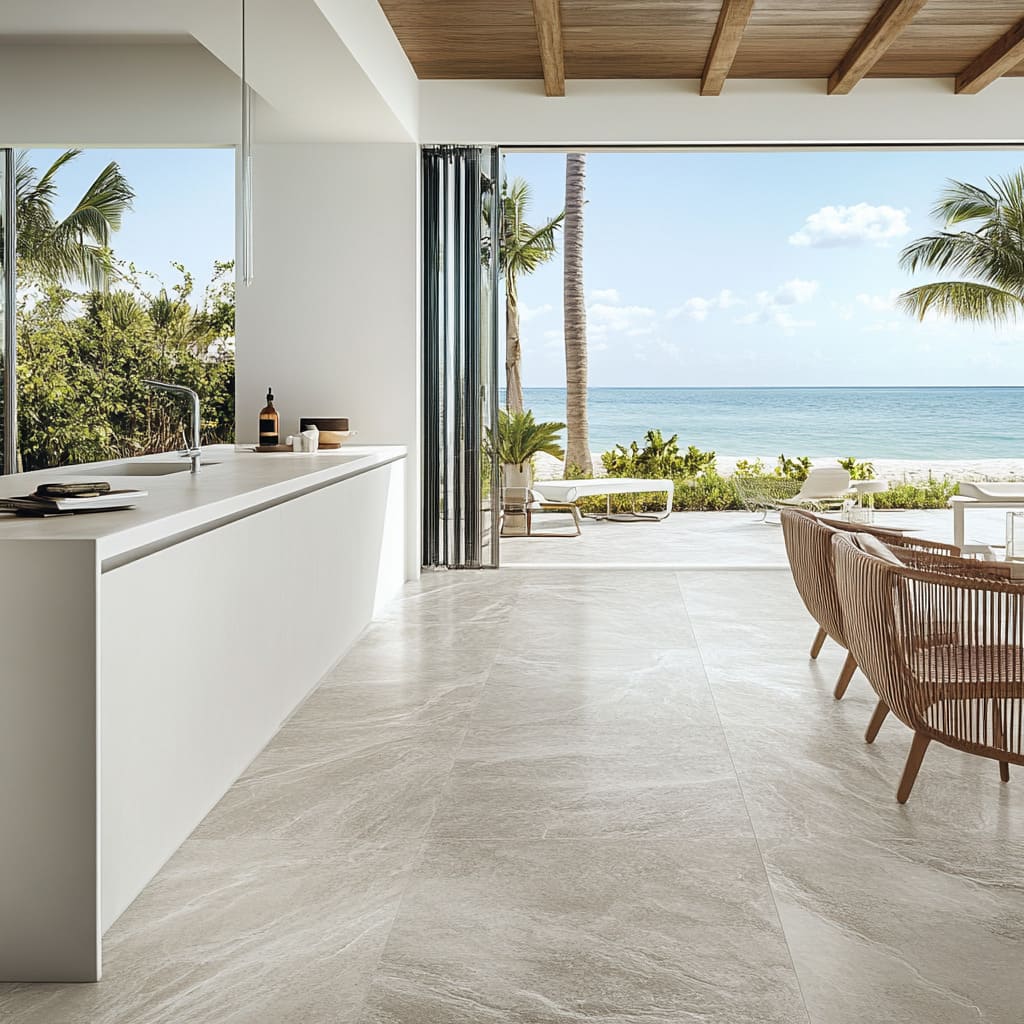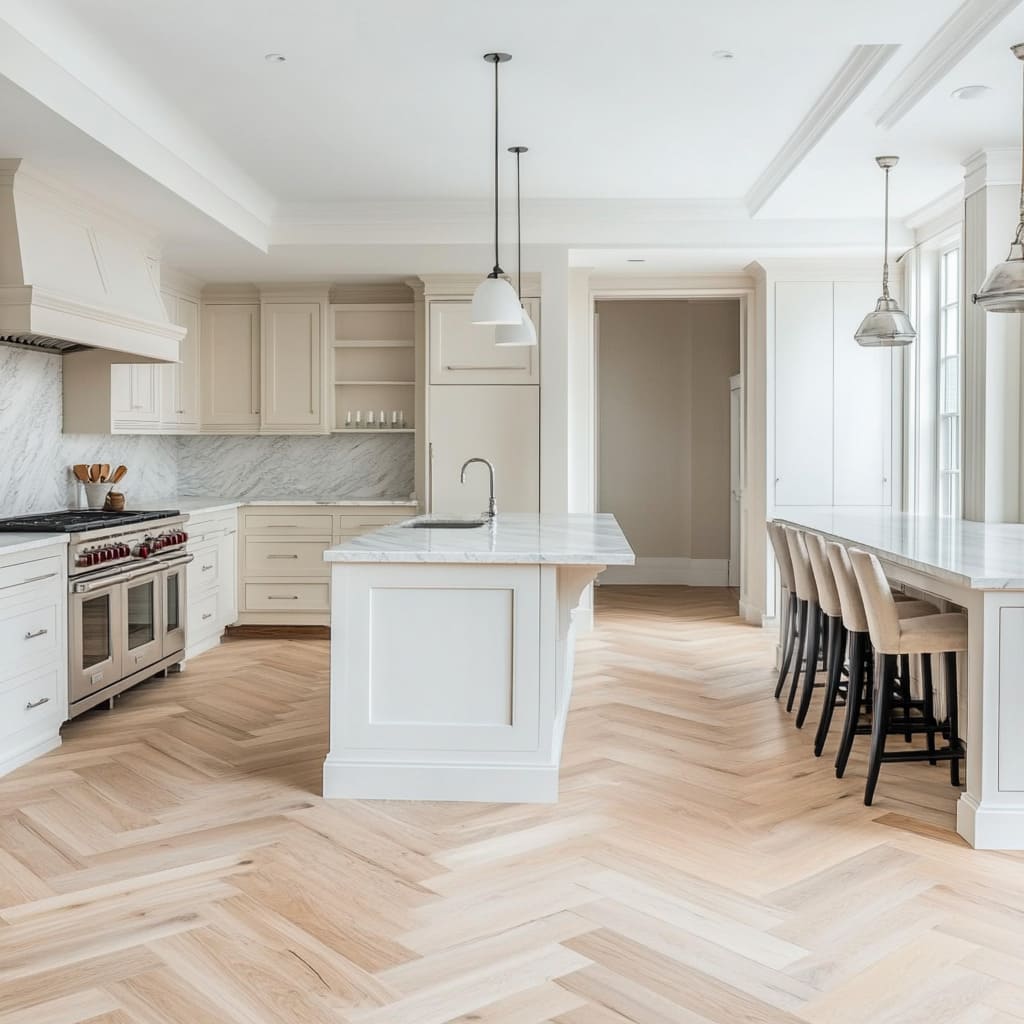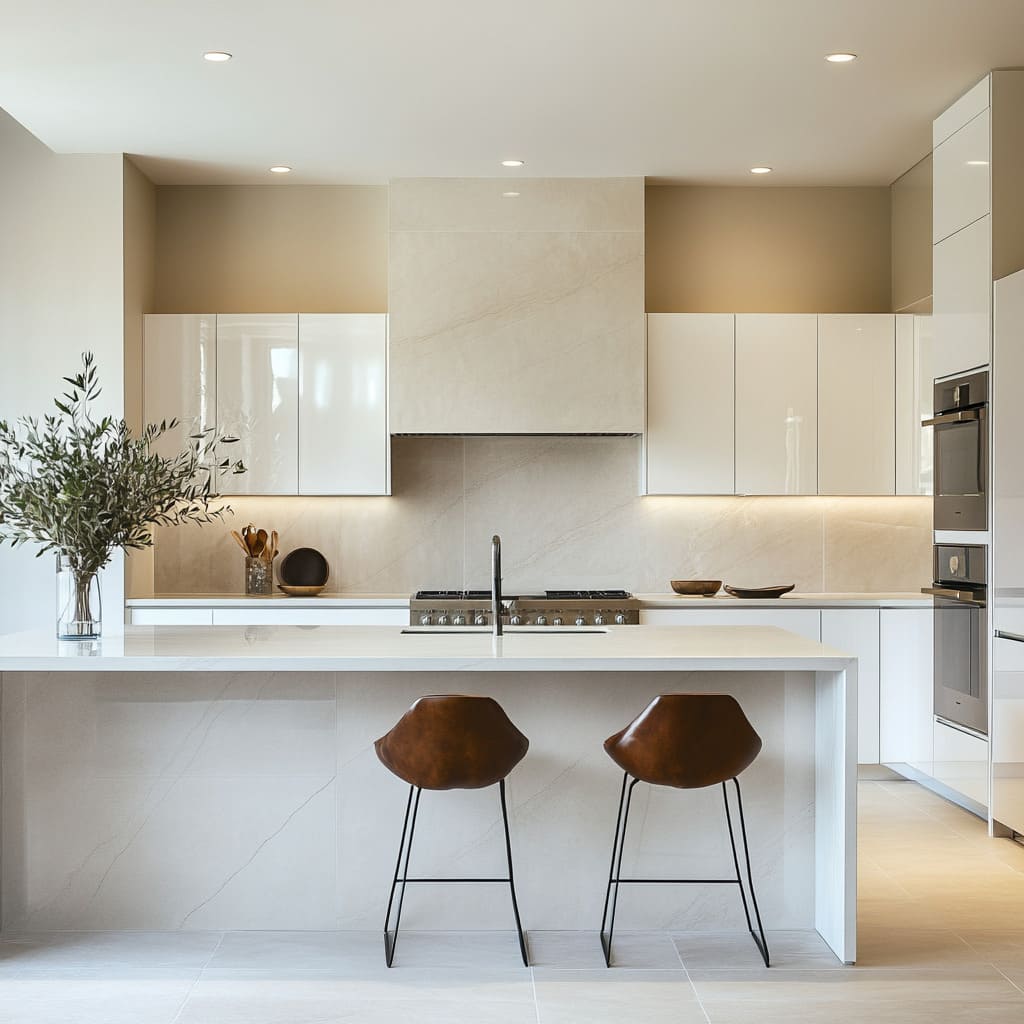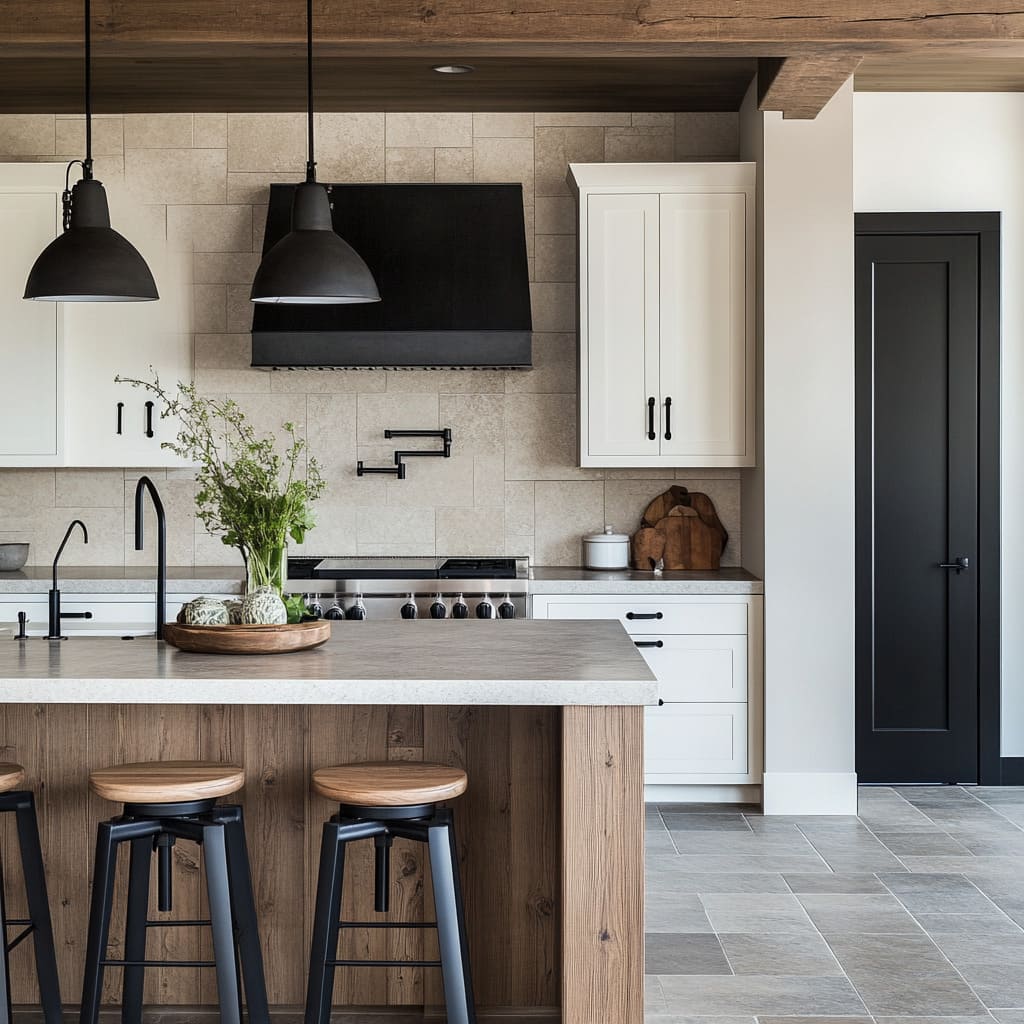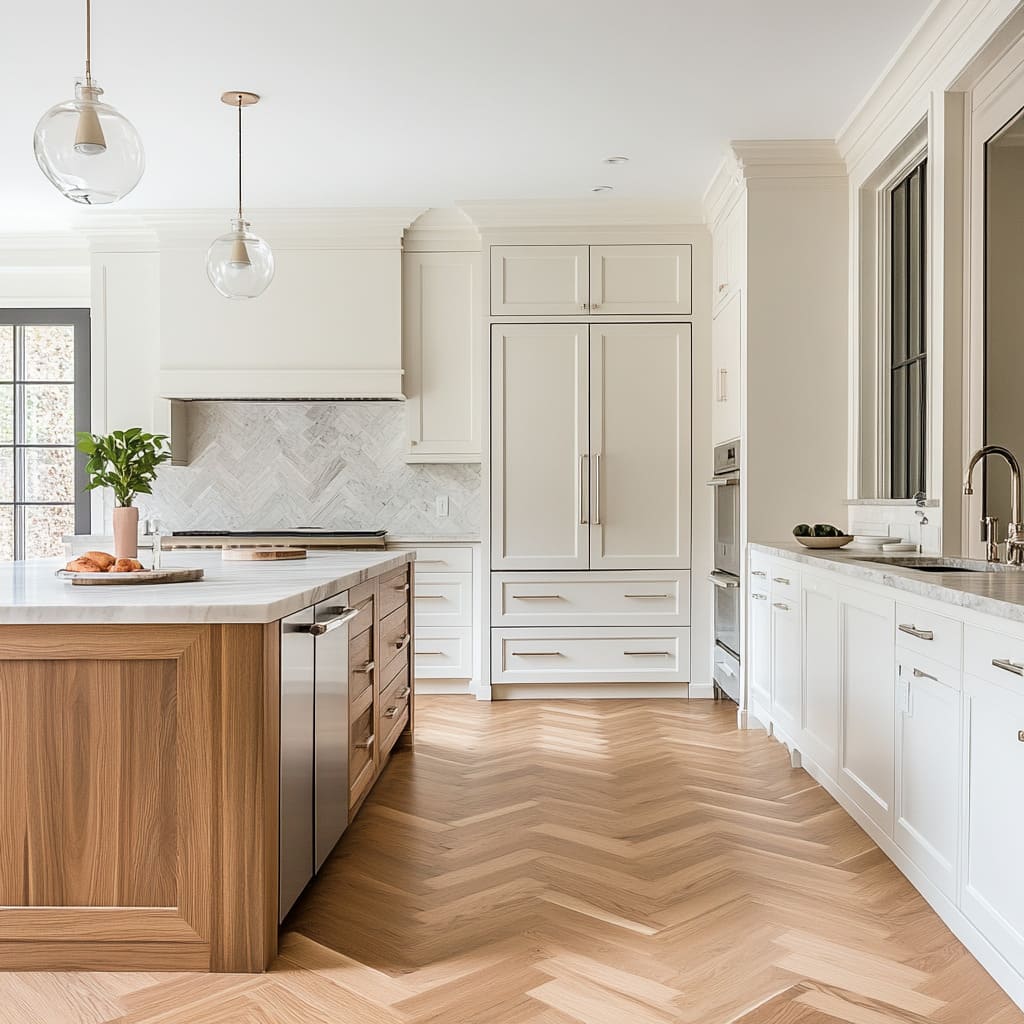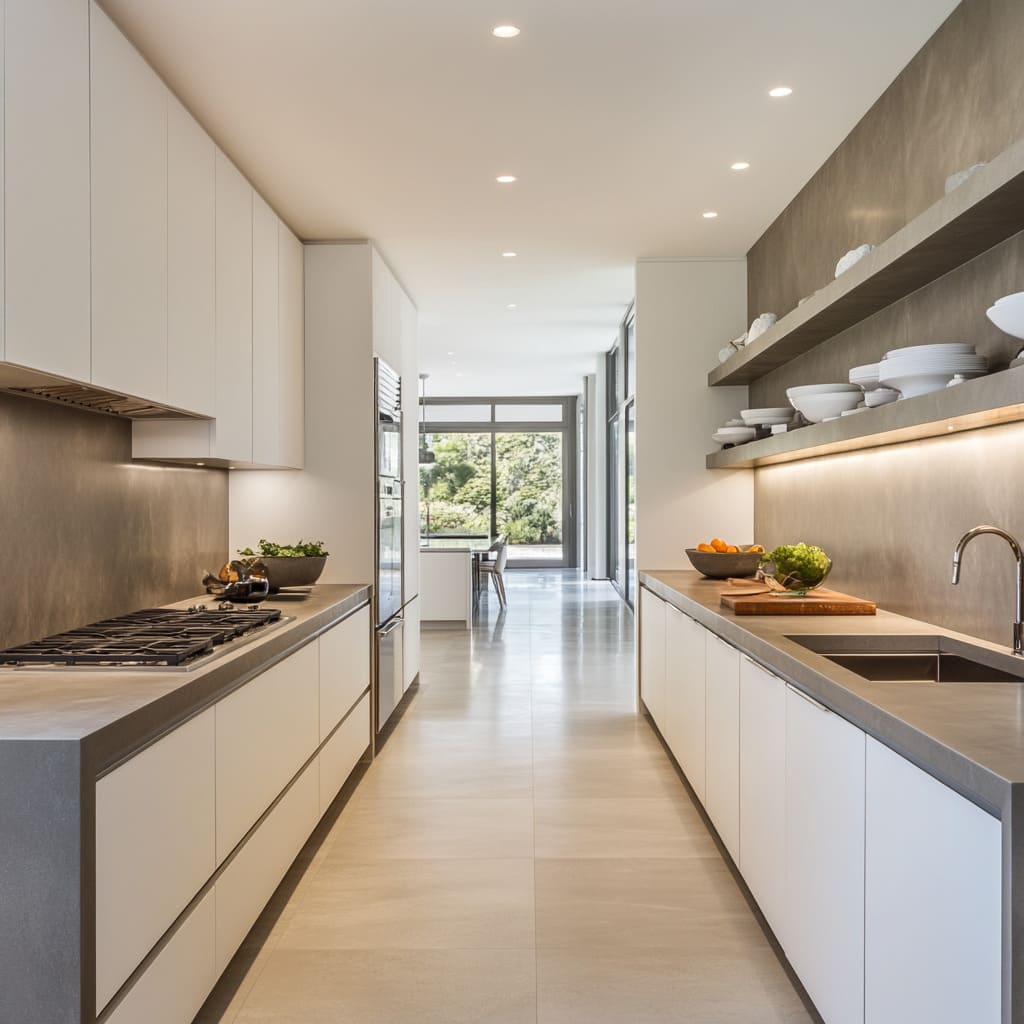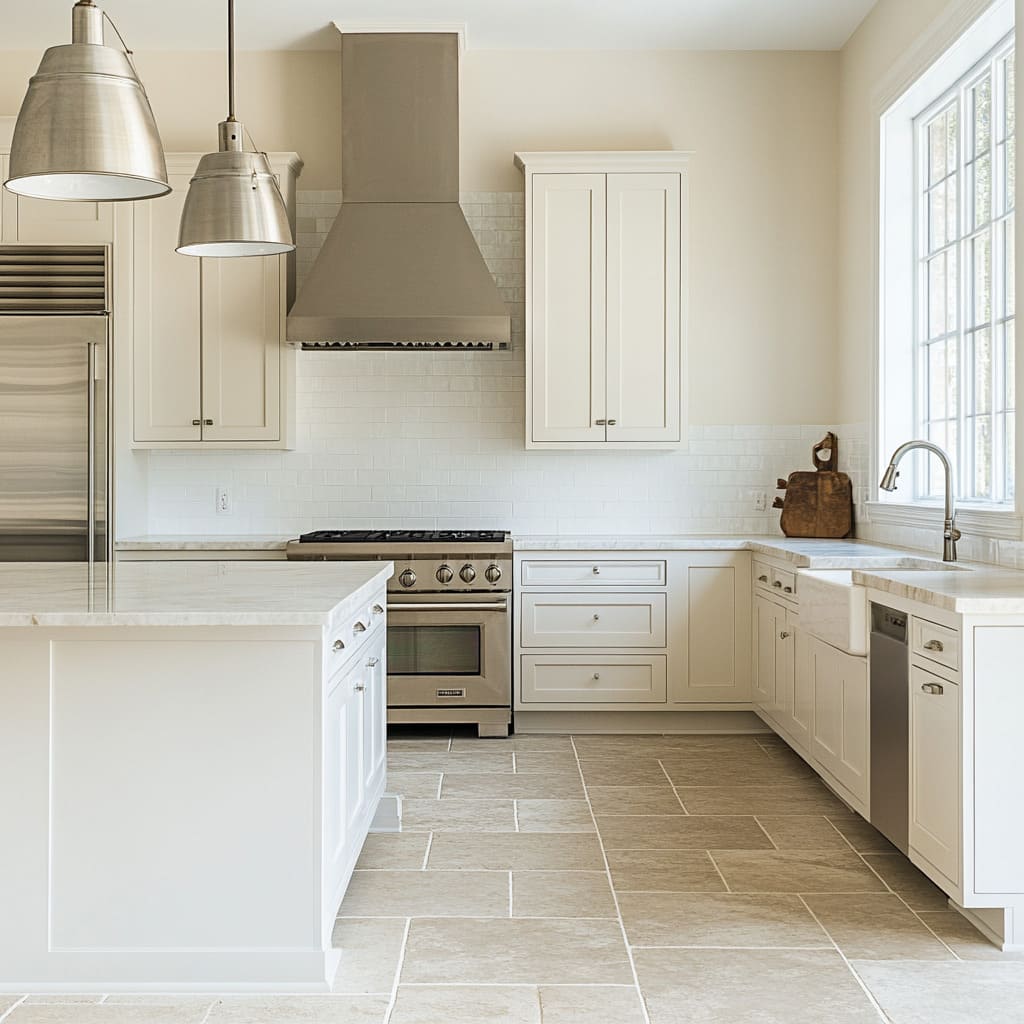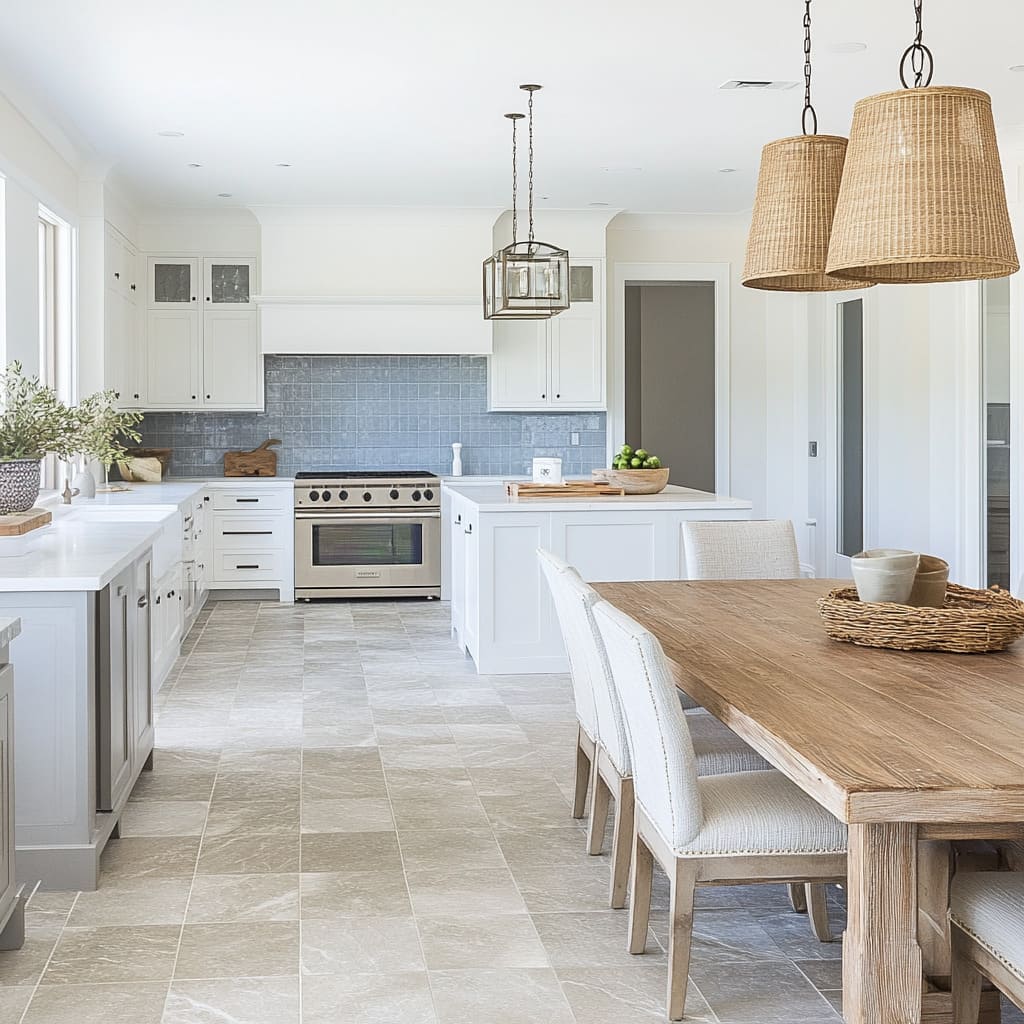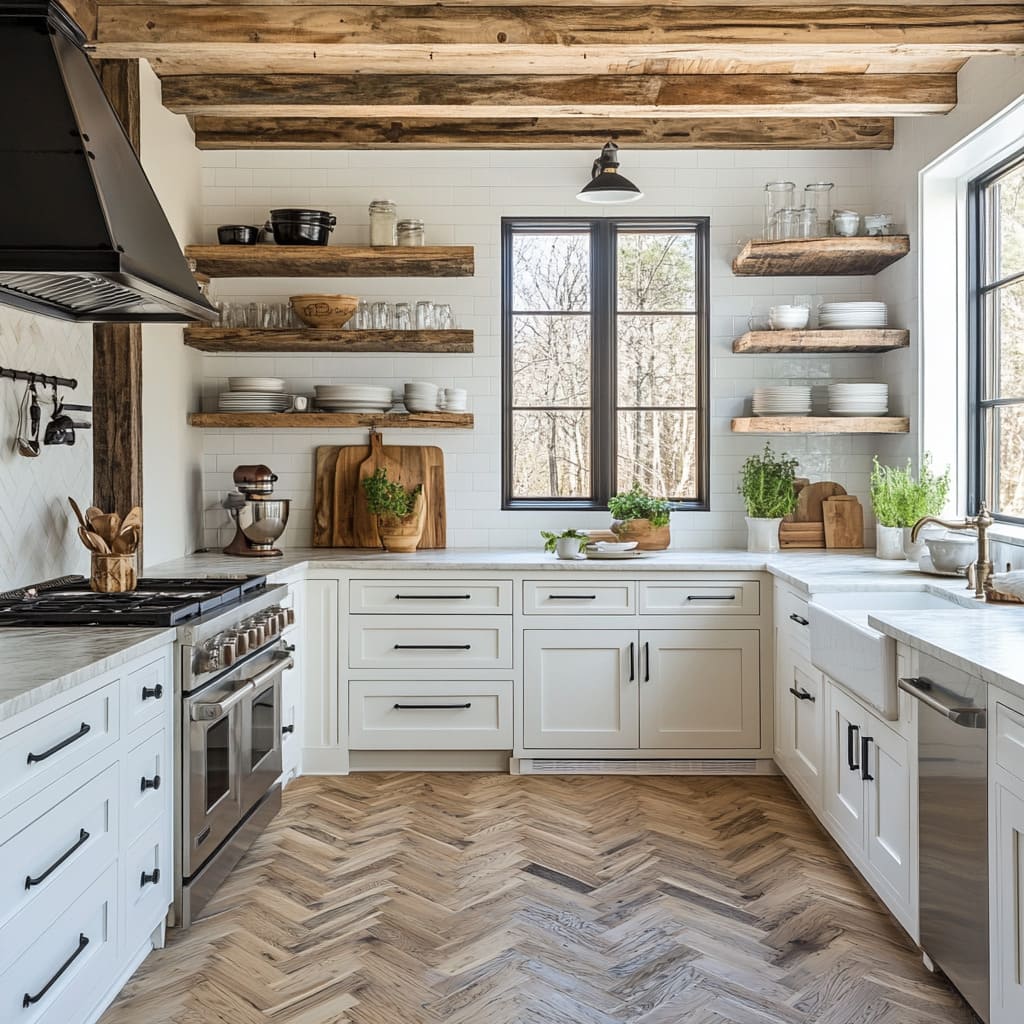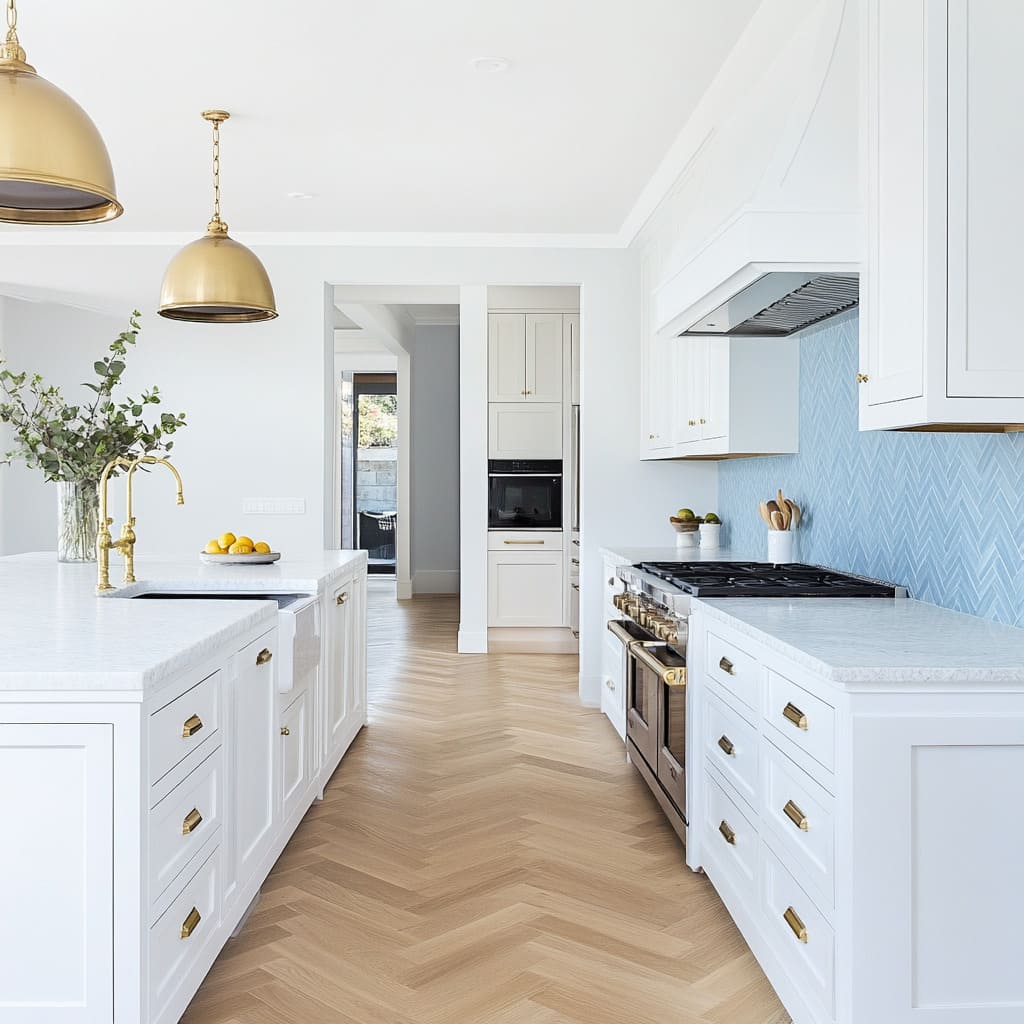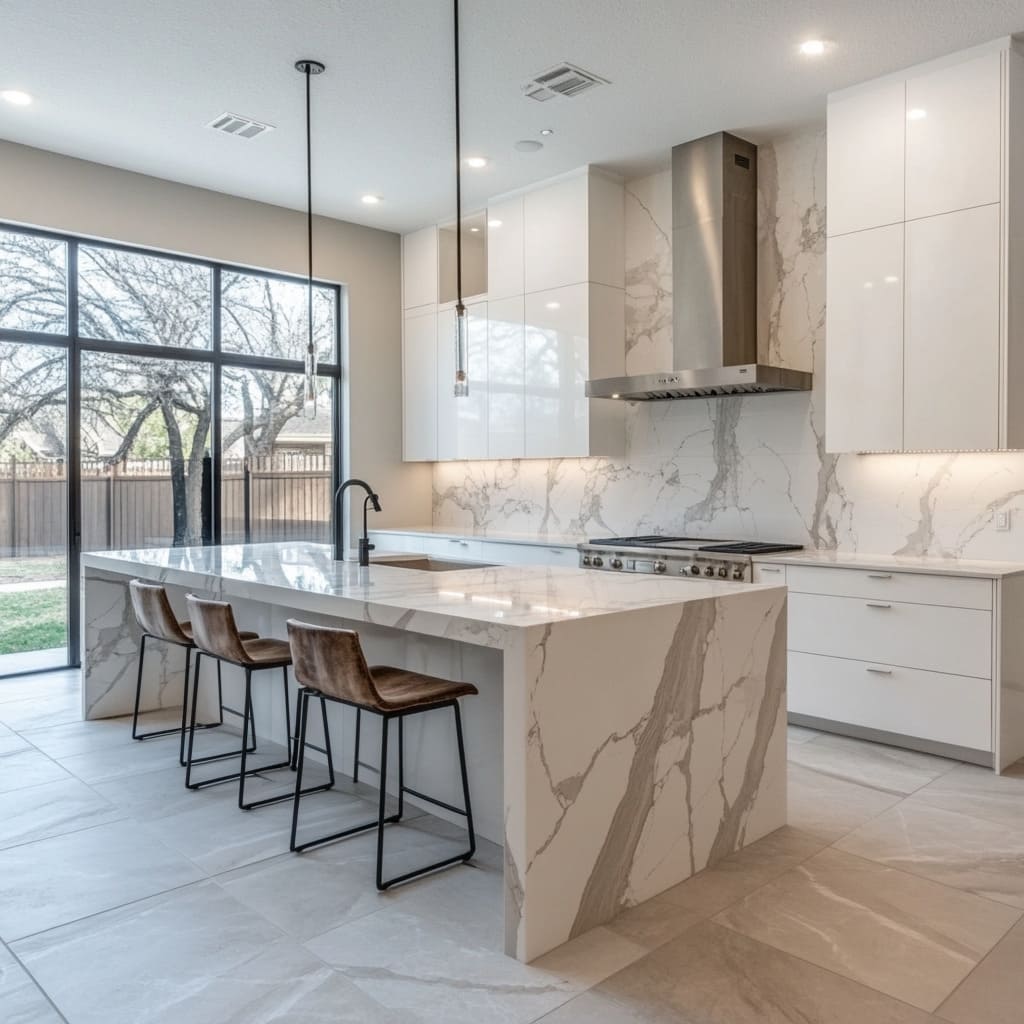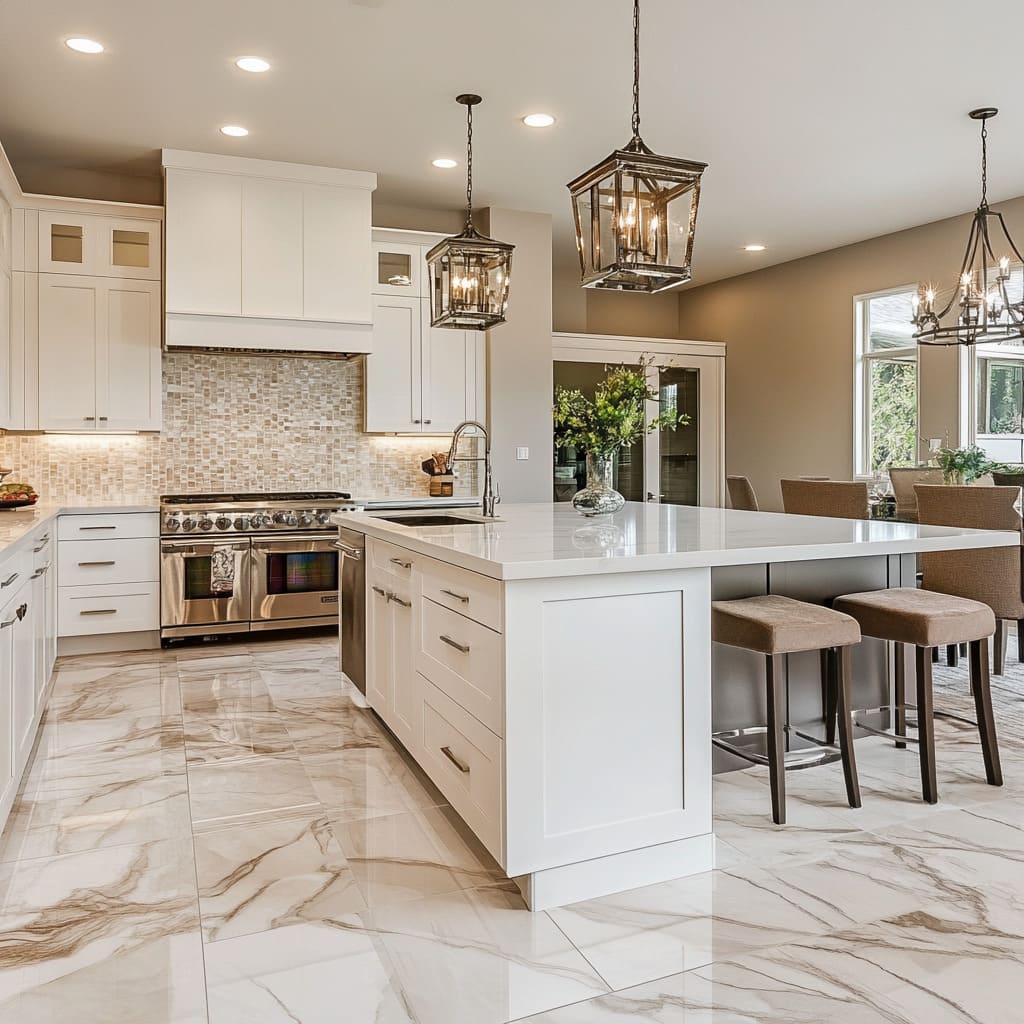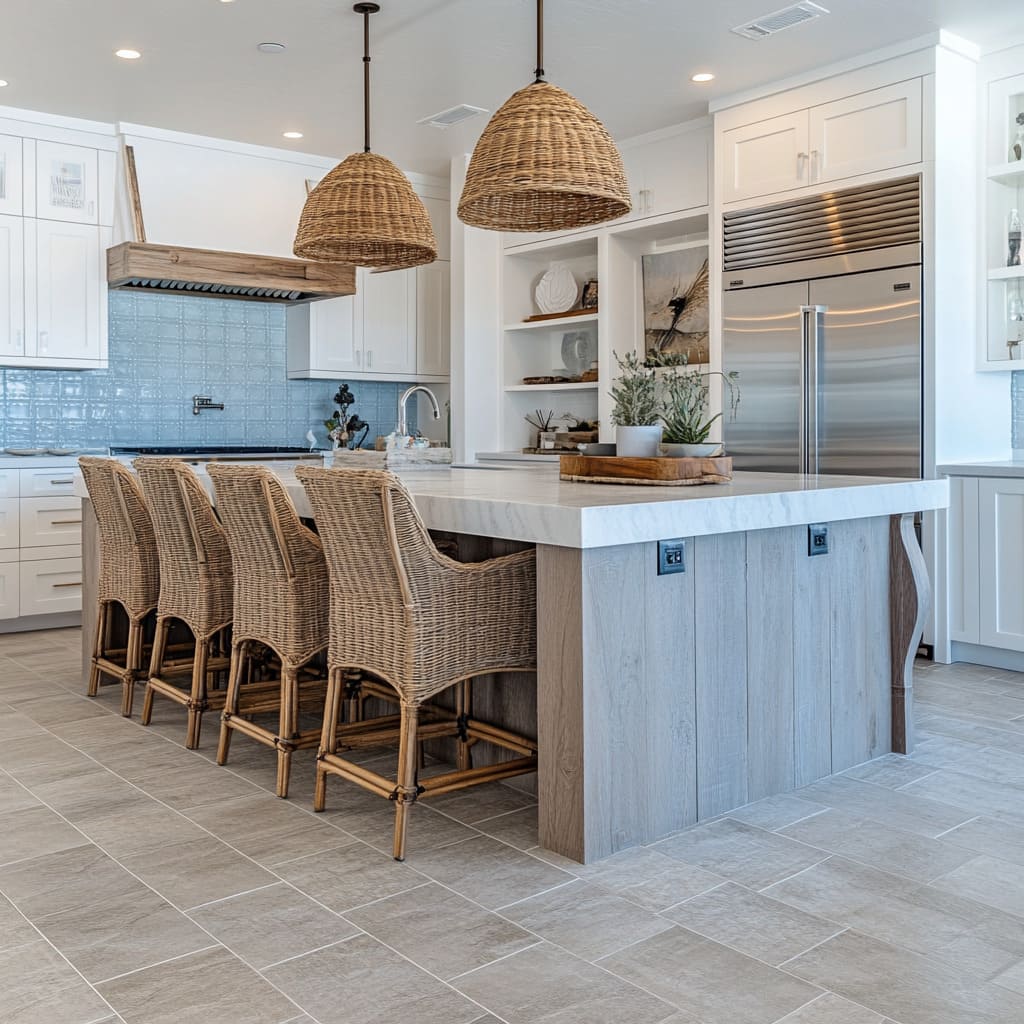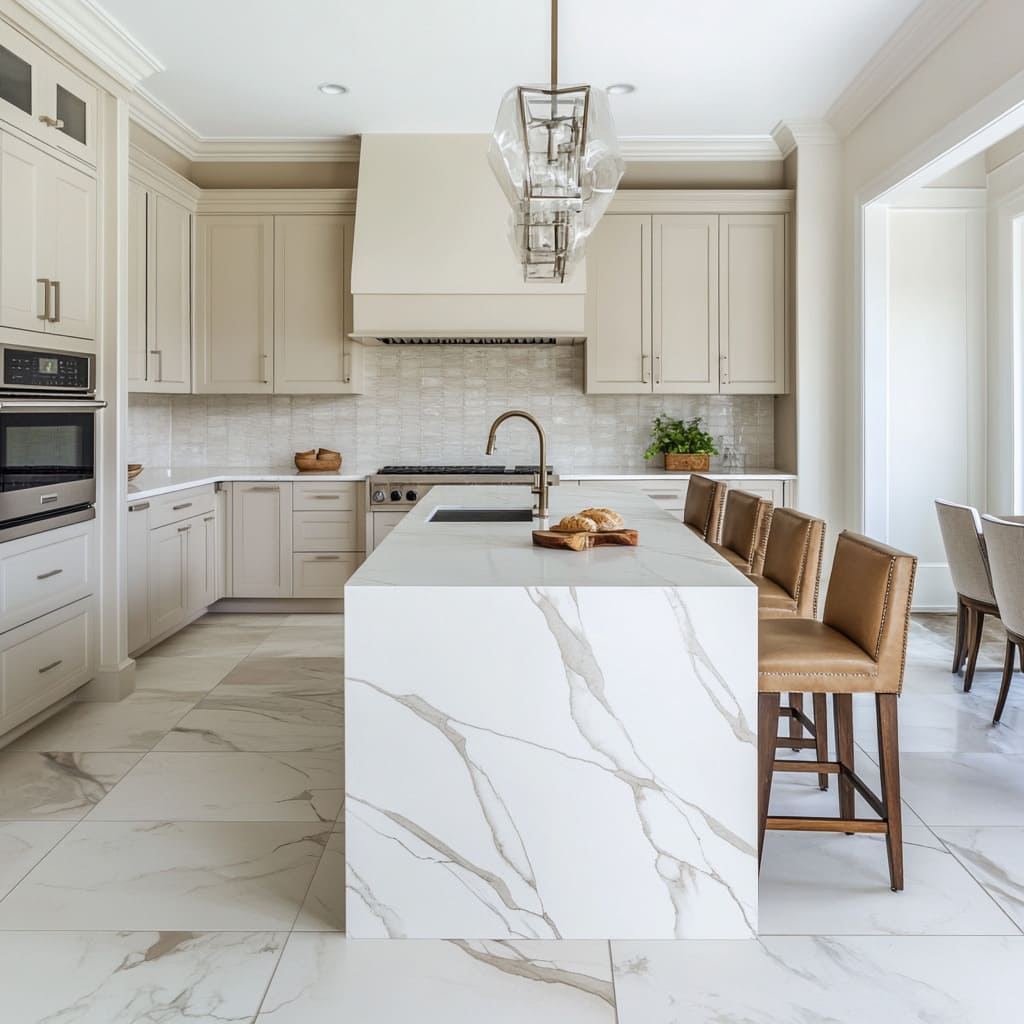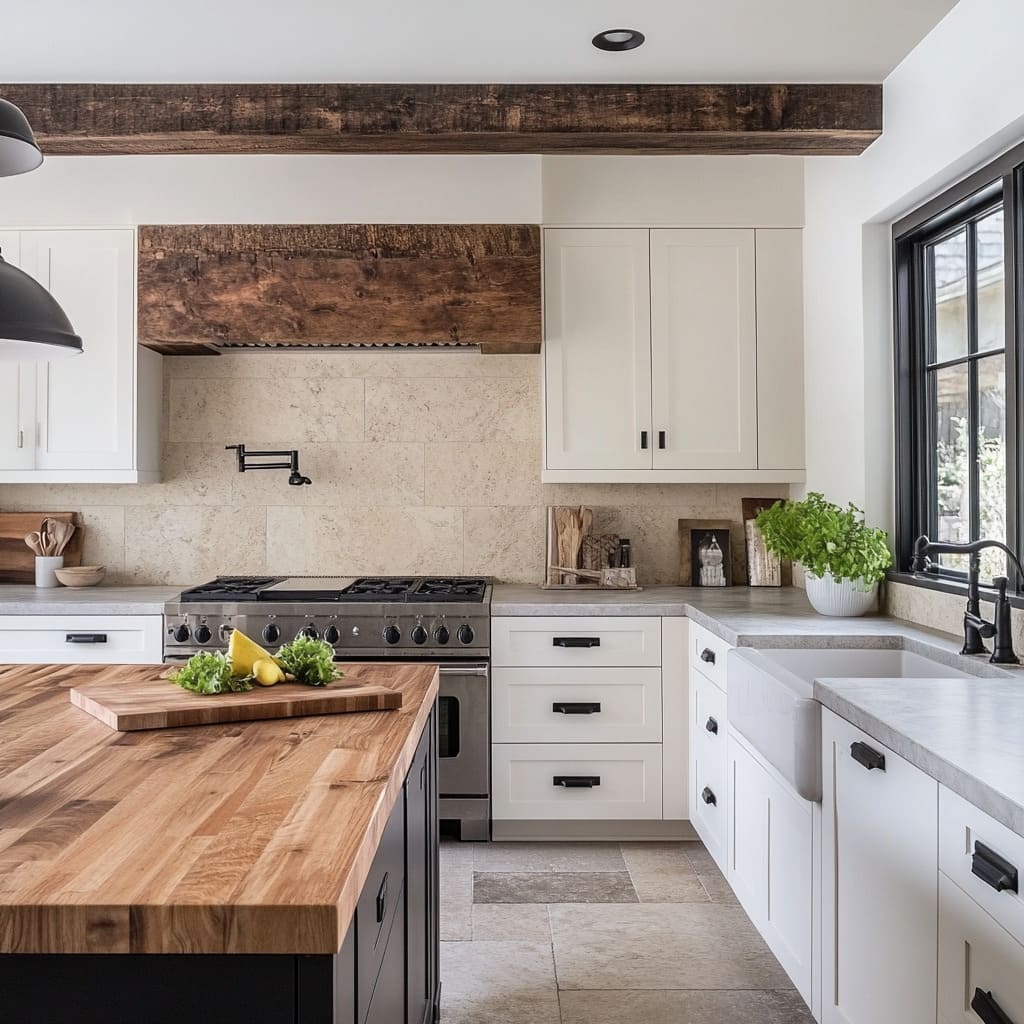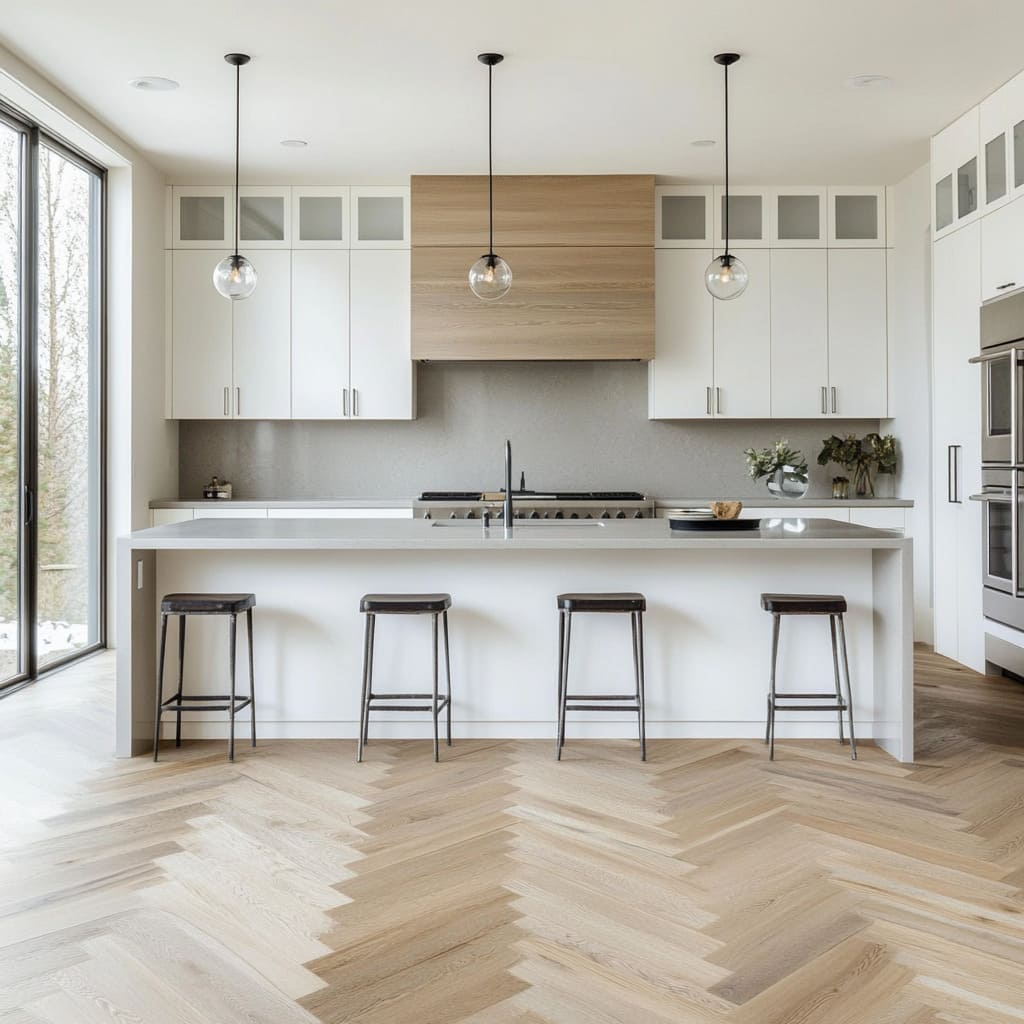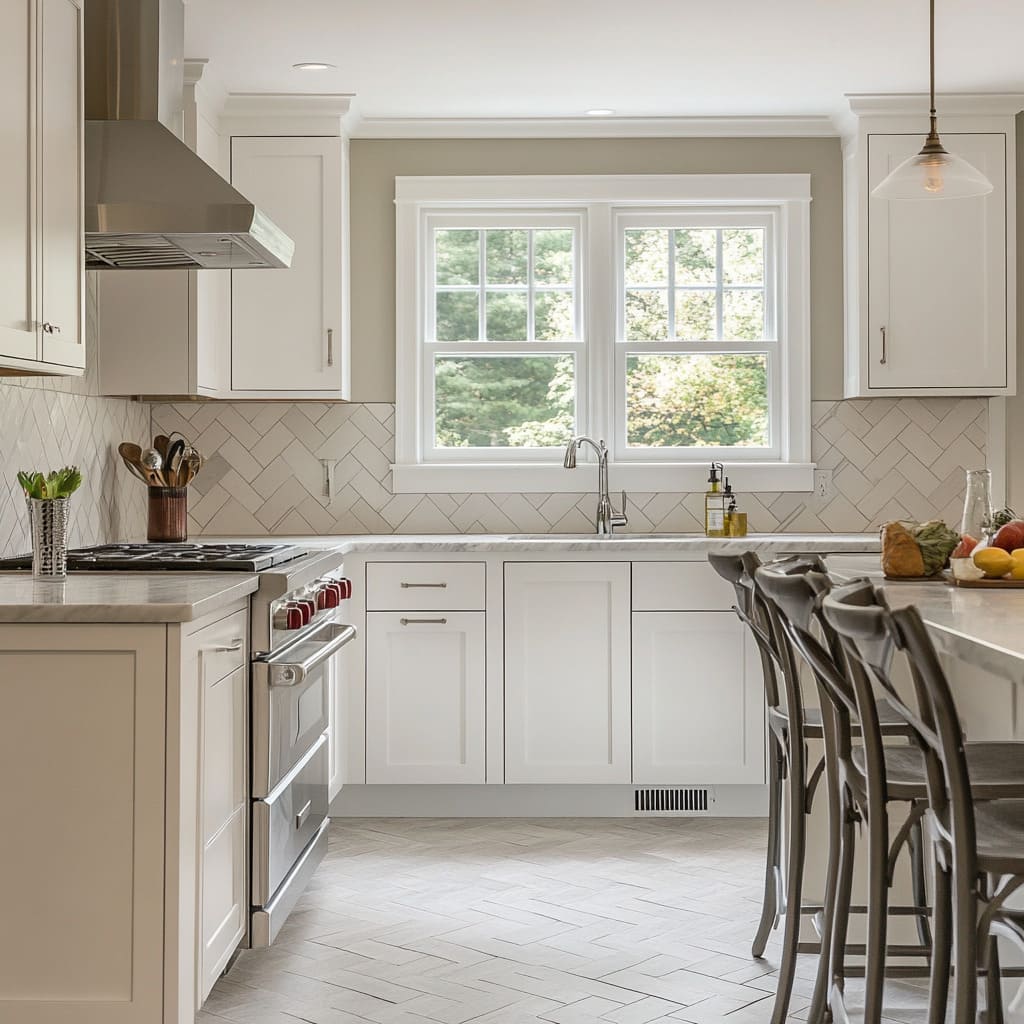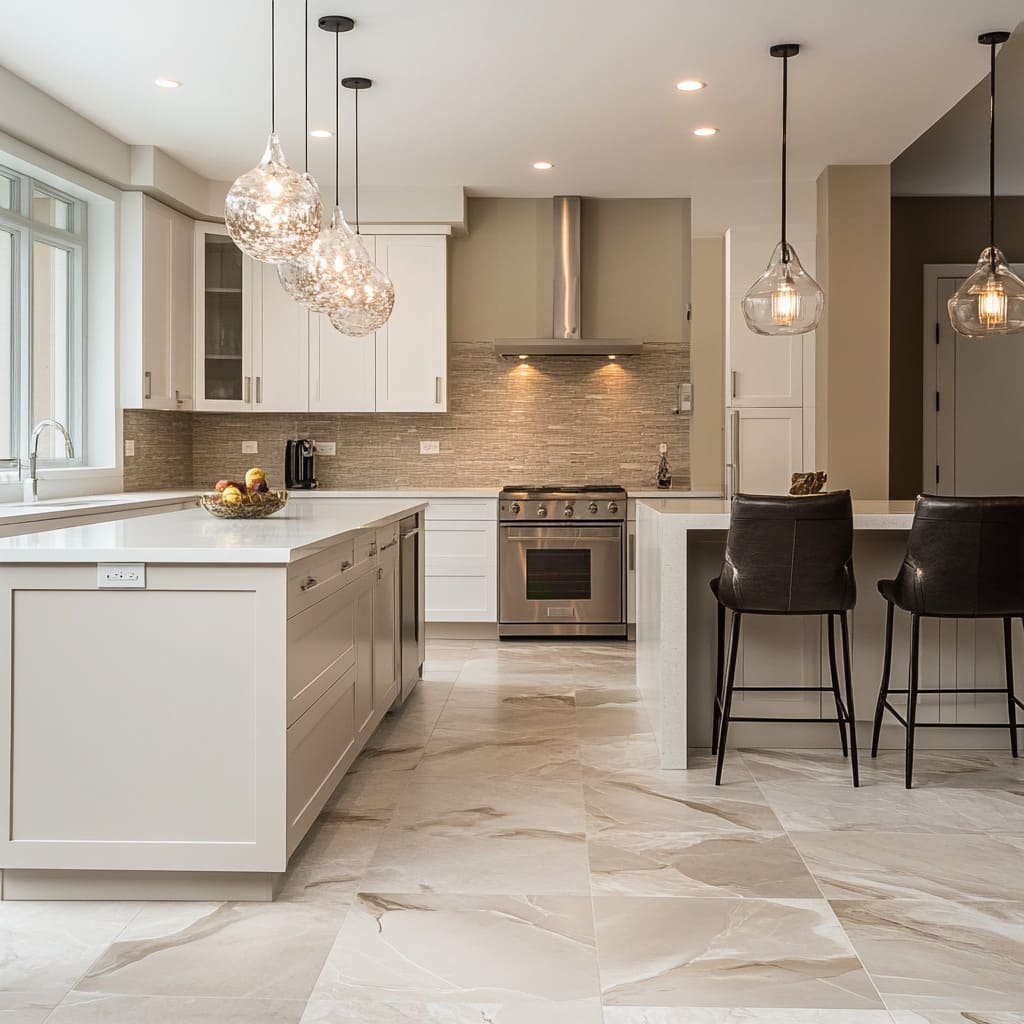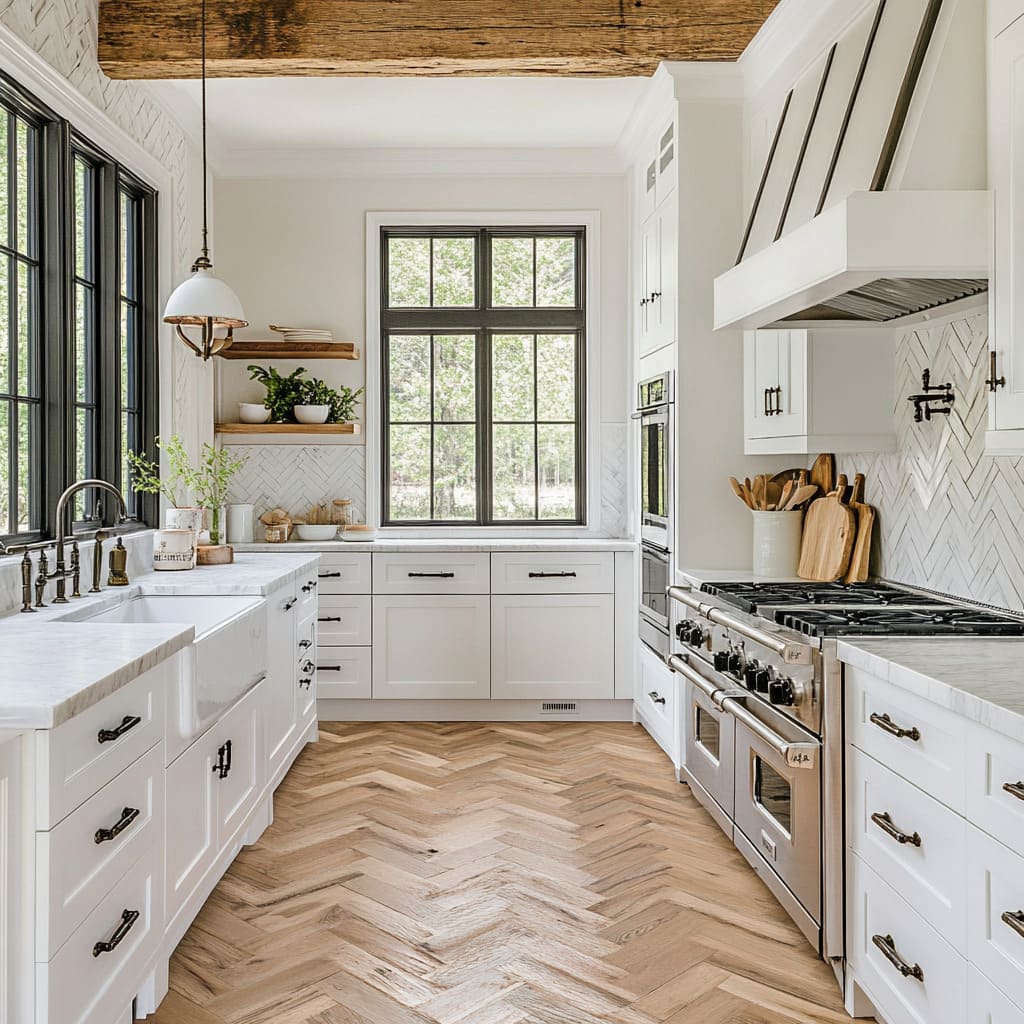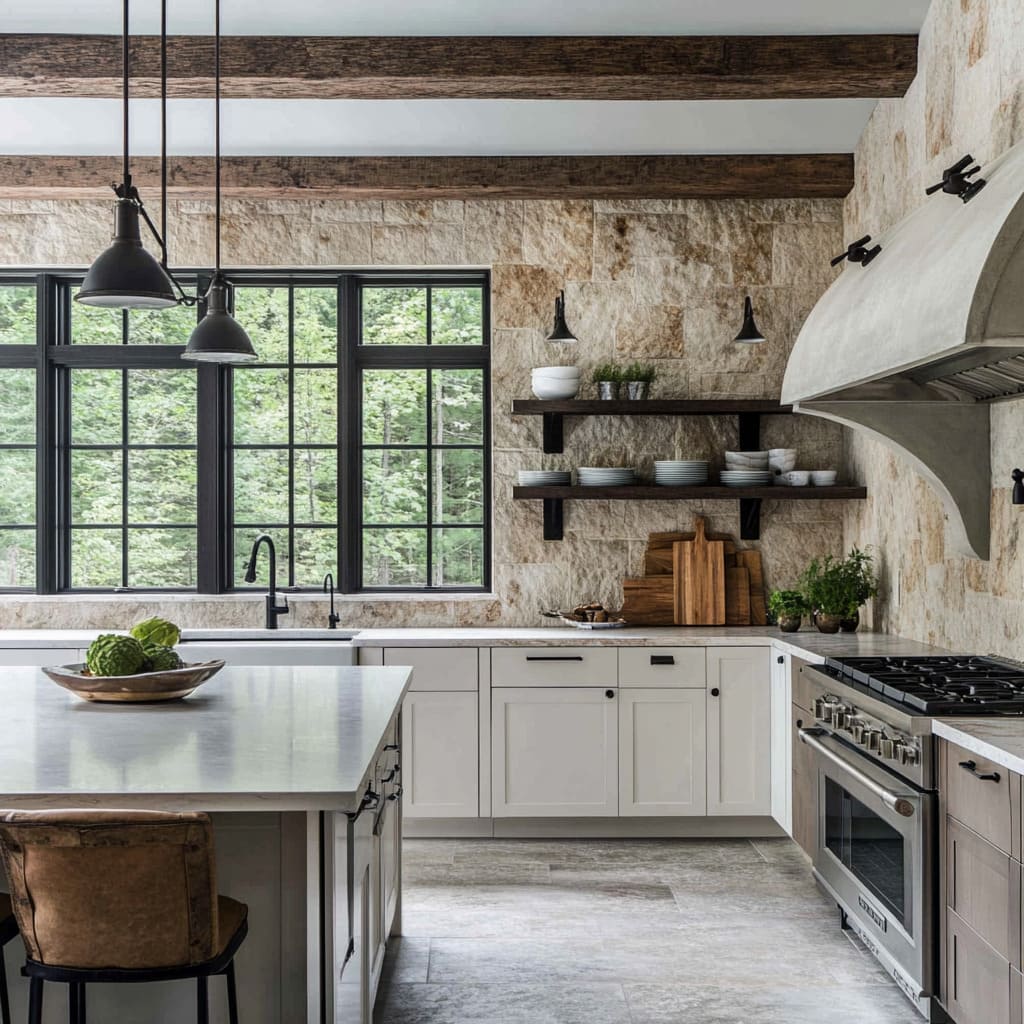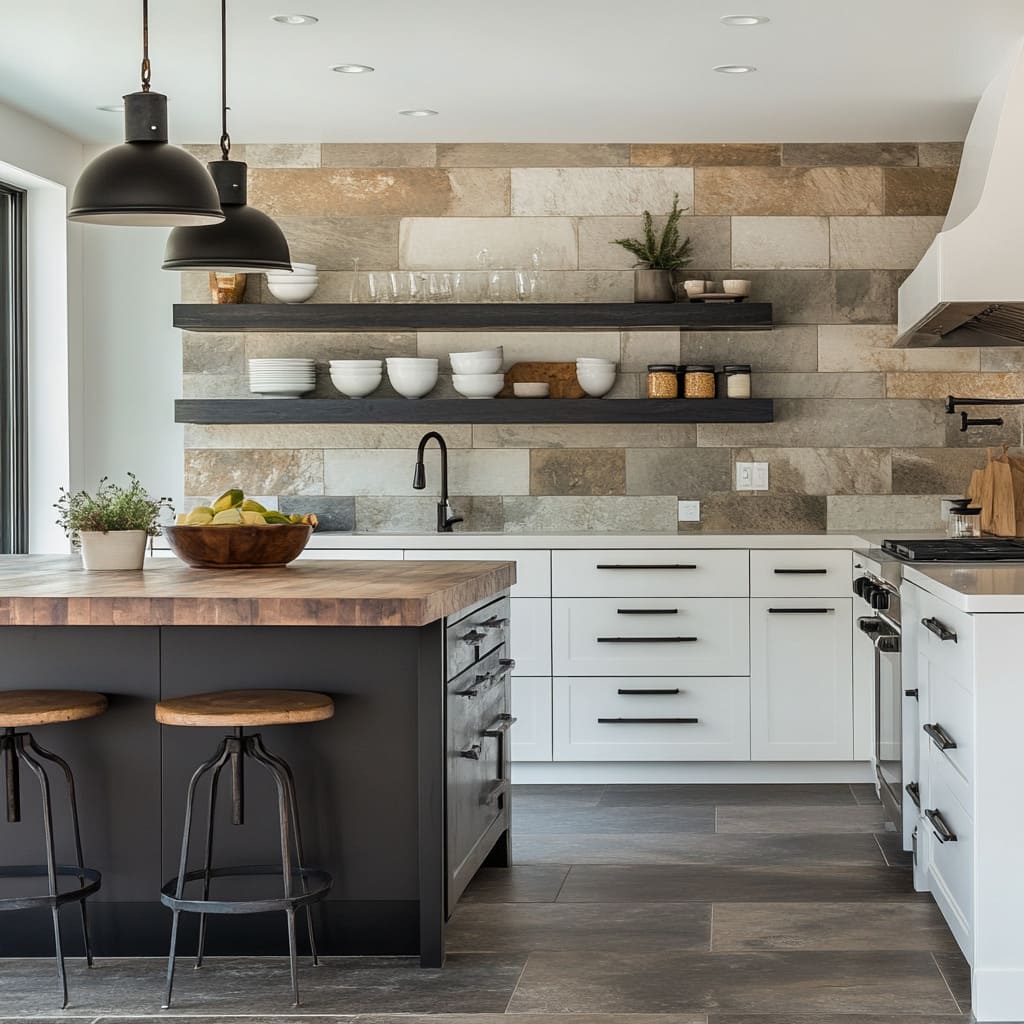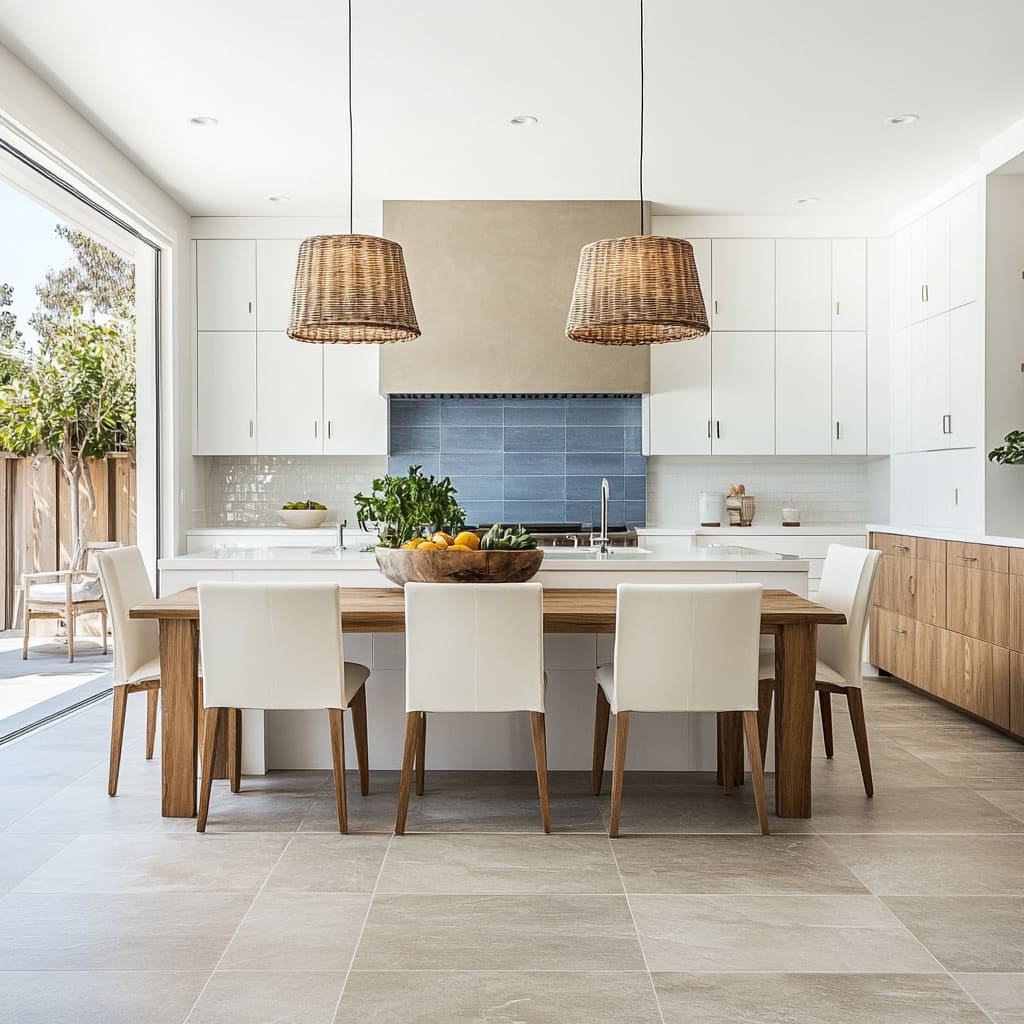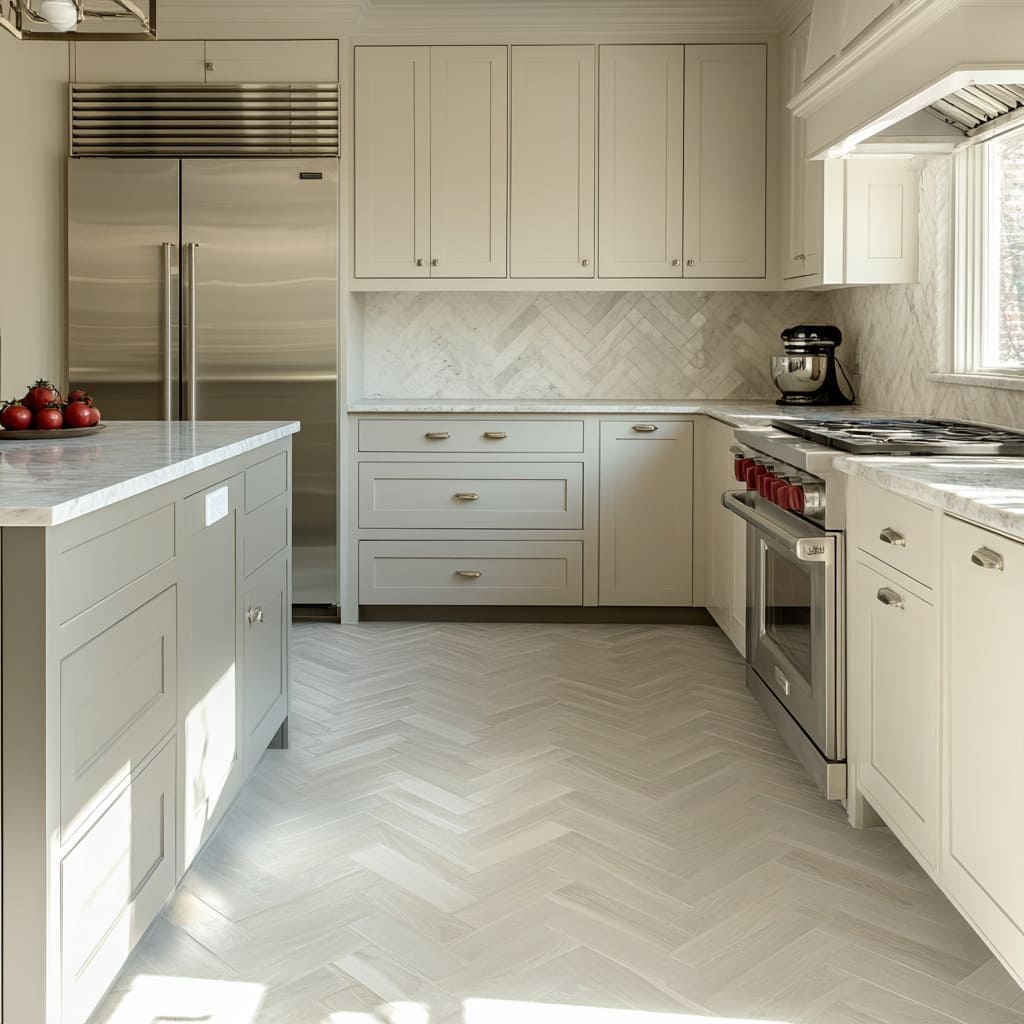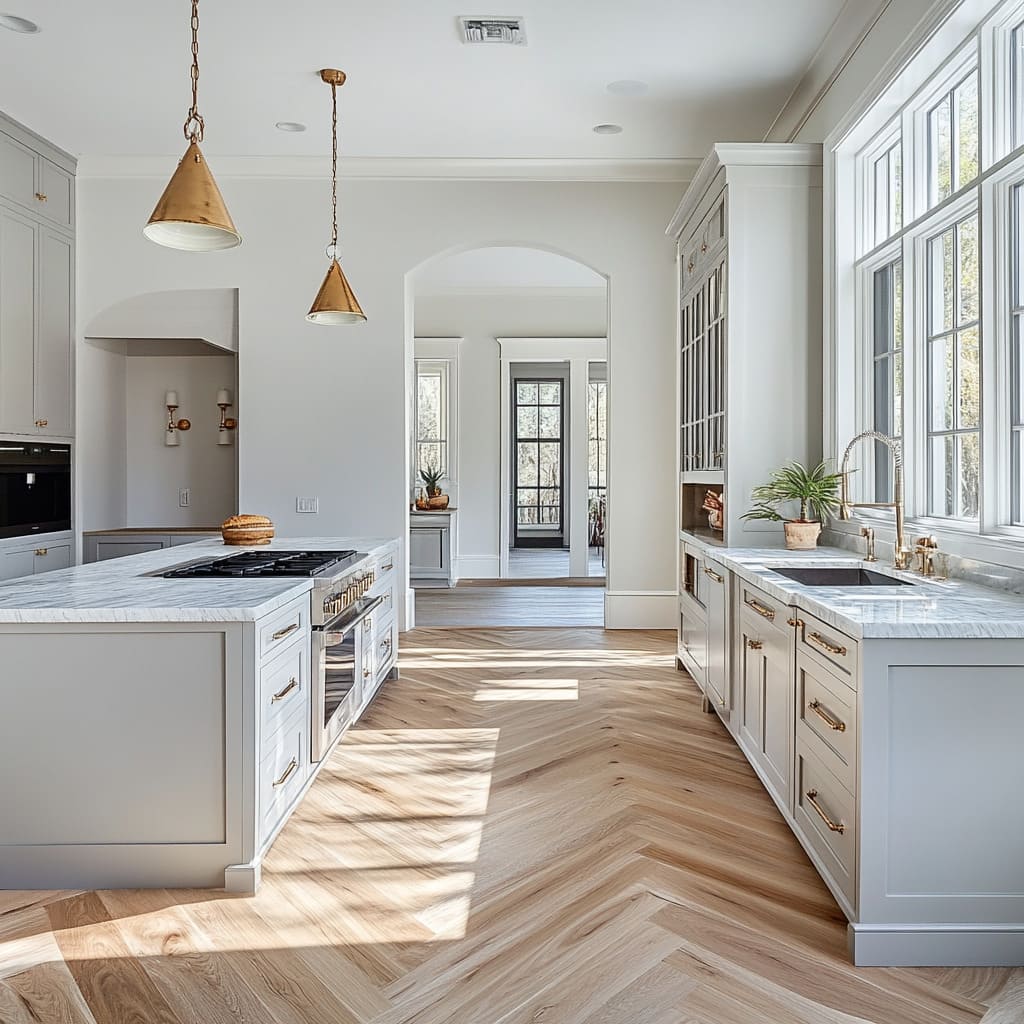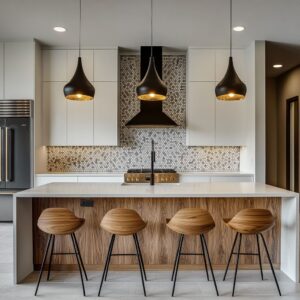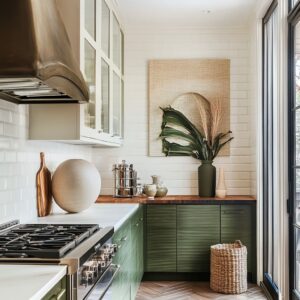The appeal of a white kitchen lies in its ability to feel timeless, adaptable, and effortlessly stylish. Whether you’re designing a compact layout or an expansive culinary space, the versatility of a white design kitchen allows for endless creative possibilities.
This classic choice provides a blank canvas where layers of texture, subtle contrasts, and thoughtful accents can shine.
White kitchens evoke a sense of openness and cleanliness, making them ideal for both traditional and contemporary homes. From the soft interplay of natural light on reflective surfaces to the way wooden accents or patterned flooring can add depth, every element contributes to a space that is as functional as it is visually inviting.
The secret to creating a standout design lies in the details—carefully balancing simplicity with statement features that ensure your kitchen is anything but ordinary. In this article, we’ll explore the essential tips and strategies for designing a white kitchen that goes beyond the basics.
Whether it’s integrating modern lighting solutions, selecting complementary materials, or achieving the perfect layout, these ideas will inspire a space that feels both personalized and timeless.
Color Nuances and Tonal Harmony
Creating a cohesive look in a kitchen starts with the interplay of shades and textures, particularly when working with white as the dominant color. The choice between soft whites and crisp whites plays a pivotal role in shaping the room’s overall atmosphere, influencing how light, warmth, and contrast are perceived.
Soft Whites Versus Crisp Whites
Pairing different tones of white, such as warm off-whites and cooler bright whites, introduces subtle variation to the space. For instance, using warmer white kitchen cabinets alongside countertops in a cooler, crisper white adds depth without overwhelming the eye.
This gentle transition prevents the design from feeling stark or overly flat while maintaining the classic charm white kitchens are known for. Flooring choice also contributes significantly to balancing these tonal contrasts.
Light gray or taupe flooring acts as a soft counterpoint to bright white surfaces, ensuring the space avoids a clinical or sterile feel. Materials such as stone-look porcelain with delicate veining not only complement white cabinetry but also bring texture and character, breaking up the uniformity of white surfaces in a way that feels natural and inviting.
Seamless Integration with Wood
Incorporating wood elements alongside white tones is a timeless design strategy, bringing warmth and an organic feel to kitchens. Wood tones, particularly those with subtle gray or beige undertones, act as a natural bridge between cooler white cabinetry and other elements.
Whether it’s exposed beams, floating shelves, or herringbone floors, wood introduces an earthy contrast that enhances the overall design. For instance, soft oak with muted grayish hues pairs seamlessly with cooler white kitchen ideas, creating harmony while adding depth.
The natural woodgrain provides a tactile element that plays beautifully against smooth white finishes, whether glossy or matte. This layering of textures ensures that every surface stands out while contributing to a cohesive, balanced aesthetic.
By blending tonal variations and incorporating complementary materials, kitchens achieve a design that feels both dynamic and unified. It’s these small details—such as undertones in whites and the interplay of wood and stone—that elevate a space, making it timeless and effortlessly functional.
Flooring Continuity and Patterns
Flooring serves as the foundation of any kitchen design, tying together the aesthetic and setting the tone for how the space feels. Thoughtful choices in patterns and materials ensure a balance between functionality and style, particularly in kitchens that feature white as a dominant color.
Herringbone and Chevron
Herringbone and chevron patterns are increasingly popular in white kitchen design, offering subtle movement without overwhelming the space. These angular layouts create a flowing rhythm, drawing the eye naturally across the room.
Unlike busier geometric motifs, these patterns strike a balance between calmness and interest, making them ideal for minimalist or transitional kitchens. There’s a noticeable Scandinavian influence in kitchens using herringbone or chevron floors.
These patterns, often paired with light-toned wood or muted finishes, reflect the airy and bright aesthetic common in Nordic design. By introducing these understated woodgrain elements, kitchens achieve a sense of warmth and texture that complements clean white cabinetry and bright countertops.
The intricate yet gentle angles of these patterns add visual energy while maintaining an overall serene atmosphere.
Large-Format Tiles
For a more streamlined and modern approach, large-format tiles are a practical and visually impactful flooring choice. The reduced number of grout lines not only simplifies maintenance but also creates a continuous surface that feels uncluttered.
This design trick works particularly well in smaller kitchens, as the absence of frequent interruptions helps the space appear more expansive. Tiles with polished or semi-polished surfaces are especially effective in brightening up kitchens.
Their reflectivity amplifies both natural and artificial light, bouncing it across the room to enhance the sense of openness. This effect can be transformative for kitchens with limited square footage or lower ceilings, where maximizing light is essential.
Large-format tiles can also be extended onto walls for a seamless integration that reinforces the room’s continuity. When paired with subtle veining or textured finishes, these tiles bring depth without competing with the rest of the design elements.
For instance, soft taupe or light gray tones in the tile can provide a gentle contrast to white cabinetry, adding dimension without disrupting the cohesive look. By thoughtfully selecting patterns and materials, flooring becomes more than a practical feature—it becomes a key design element.
Whether through the flowing angles of herringbone or the clean simplicity of large-format tiles, the right flooring can transform a kitchen into a harmonious and visually engaging space.
Lighting Techniques and Effects
Lighting is a transformative element in kitchen designs with white cabinets, offering functionality while shaping the atmosphere and emphasizing key design elements. Thoughtful layering of lighting sources creates a dynamic and visually balanced space, ensuring both practical needs and aesthetic goals are met.
Layered Lighting for Atmosphere
In many contemporary kitchens, the blend of concealed and statement lighting introduces a perfect harmony between subtlety and boldness. Recessed or under-cabinet lighting is a favored choice for enhancing backsplashes and countertops.
These hidden sources create a soft glow that draws attention to surfaces without overwhelming the design. This technique is particularly effective in kitchens with white cabinetry, as the gentle illumination accentuates the clean lines and polished finishes.
On the other hand, statement lighting, such as pendant fixtures over an island, becomes a focal point in the room. Glass pendants are a popular choice, offering a transparent quality that maintains open sightlines and avoids visual clutter.
They provide elegance and function, enhancing the light’s reach without obstructing the view. In contrast, metal or black-framed lighting fixtures introduce a striking visual anchor, adding depth and grounding the room’s overall look.
The materials used in lighting also influence the space’s character. Glass fixtures convey lightness and fluidity, while darker or industrial-style pieces create contrast, giving the space more definition.
Designers often balance these elements by using a mix of finishes, ensuring the lighting complements both the cabinetry and other accents within the kitchen.
Window Placement and Natural Light
Natural light is another crucial aspect of lighting design, particularly in kitchens that prioritize brightness and openness. Large windows and thoughtfully placed glass doors allow daylight to flood the space, reinforcing the clean aesthetic of white cabinetry.
Sliding or folding glass doors are a popular feature, particularly in homes with access to patios or gardens. This seamless transition between indoor and outdoor areas creates a sense of expansion, bringing in natural textures and colors that counterbalance an otherwise monochromatic scheme.
For kitchens with prominent outdoor views, black metal-framed windows add a structured touch. These frames act as visual borders, creating an intentional composition that blends interior and exterior elements.
Multi-pane designs further enhance this effect, introducing geometric shapes that mirror the crisp lines of cabinetry and countertops. The result is a cohesive yet striking aesthetic that feels both modern and timeless.
The interplay between artificial and natural light is particularly important in kitchen designs with white cabinets. Reflective surfaces, such as polished stone or glossy finishes, amplify daylight and artificial illumination alike, making the space feel larger and more vibrant.
This duality ensures that the kitchen remains inviting and functional throughout the day, regardless of changing light conditions. Lighting techniques go far beyond practical illumination.
By carefully layering different sources and integrating natural light, designers can shape a kitchen that feels open, warm, and visually engaging. Whether through the subtle glow of concealed lighting, the bold statement of pendant fixtures, or the framing of outdoor views, these strategies elevate white kitchens into spaces of comfort and style.
Material Contrasts and Focal Points
In many contemporary kitchens, the interplay of materials plays a vital role in defining both style and functionality. This section delves into how specific design elements such as waterfall countertops and mixed metal finishes create visual interest and balance in spaces that predominantly feature white cabinetry.
Waterfall Countertops as Showpieces
Waterfall countertops have become a hallmark of modern kitchen design, offering a sleek and sculptural quality to islands and counters. By extending the material seamlessly from the top surface down to the sides, these countertops achieve a monolithic appearance that feels both contemporary and luxurious.
Materials like white quartz or marble-like composites are particularly popular for this feature, as their clean and uninterrupted lines emphasize the purity of the design. These dramatic surfaces serve as focal points within the kitchen, drawing attention to the island or counter.
However, their bold presence is often softened through the thoughtful use of complementary materials. For instance, pairing a white waterfall edge with warm wooden stools can introduce a sense of balance, preventing the space from feeling overly stark.
Similarly, metal accents, such as brushed stainless steel or black-framed lighting fixtures, provide contrast and texture, enhancing the island’s role as a central design element. The beauty of waterfall countertops also lies in their ability to integrate seamlessly with other parts of the kitchen.
When paired with subtle veining or textured flooring, they become part of a harmonious whole rather than an isolated feature. This integration is particularly evident in kitchens with white cabinets, where the cohesive use of materials creates a visually appealing and functional space.
Mixing Metals for Subtle Interest
Beyond countertops, the strategic use of metal finishes in kitchen design brings depth and sophistication to the overall aesthetic. Brushed gold or brass accents are a popular choice for faucets, hardware, and light fixtures, adding a sense of warmth to white-and-wood kitchens.
These tones work especially well with taupe or gray flooring, as the warm undertones in gold complement the cooler hues of the floor, creating a balanced and inviting palette. In contrast, black or bronze finishes introduce a stronger visual statement, providing striking contrast against white cabinetry.
Black metal pulls, for example, add definition to drawers and doors, while bronze light fixtures or range hoods can act as a unifying element when paired with other darker details, such as window frames or bar stools. This interplay of light and dark tones prevents the design from appearing too monochromatic, giving the kitchen a polished yet approachable feel.
One of the most compelling aspects of mixing metals is its versatility. Whether a kitchen leans toward contemporary minimalism or incorporates rustic elements, the careful selection of metallic finishes ensures that each component feels intentional.
Brushed finishes, for instance, add texture without overwhelming the design, while polished surfaces enhance the sense of light and space.
The thoughtful use of materials, from sculptural waterfall countertops to the nuanced combination of metallic accents, elevates the design of kitchens with white cabinets. These elements create focal points that anchor the space while maintaining harmony with the overall palette.
By balancing bold design choices with complementary details, designers craft kitchens that are not only functional but also visually engaging, showcasing how material contrasts can bring white-centric spaces to life.
Textures and Subtle Layering
In a well-designed kitchen, textures and layering can transform a clean, white space into a more inviting and visually dynamic environment. The subtle introduction of patterns, materials, and finishes ensures that the design doesn’t feel flat, while maintaining the cohesive appeal of a predominantly white aesthetic.
Stone and Tile Backsplashes
Backsplashes play an integral role in adding depth and character to a kitchen without overwhelming the overall design. A herringbone or mosaic tile pattern, strategically placed behind the stove, acts as a gentle focal point.
It introduces dimension without disrupting the calm atmosphere, making it a popular choice in many beautiful white kitchens. The angular arrangement of tiles creates a rhythmic visual interest, subtly drawing the eye without demanding attention.
Another effective approach is the use of continuous materials. Extending the countertop material up the wall for the backsplash is a seamless strategy that eliminates unnecessary visual interruptions.
When done with natural stone or quartz featuring prominent veining, the uninterrupted flow highlights the stone’s intricate patterns, making it the star of the design. This continuity not only elevates the kitchen’s overall aesthetic but also simplifies cleaning and maintenance, particularly in spaces that emphasize practicality alongside beauty.
Wood Elements for Calming Effect
Wood has long been a staple in kitchen design for its warmth and ability to balance the cooler tones often found in white kitchens. Floating wooden shelves, in particular, are a versatile way to showcase essentials while maintaining an open and airy feel.
Unlike traditional upper cabinets, which can create a sense of heaviness, these shelves provide just enough storage while allowing the walls to breathe. When paired with carefully curated items like neutral dishware or subtle décor, they enhance the kitchen’s functionality and style simultaneously.
For those seeking a touch of rustic charm, reclaimed wood beams or weathered island panels are excellent choices. The organic texture of reclaimed wood—with its knots, grain, and slightly imperfect finish—adds character and richness to a white kitchen remodel.
These elements provide a sense of history and personality, effortlessly balancing the sleek and modern surfaces of white cabinetry.
Bringing It All Together
By layering textures thoughtfully, a white kitchen can achieve a balance of sophistication and approachability. The combination of stone, tile, and wood creates a harmonious interplay of materials that draws the eye and keeps the space engaging.
These choices ensure the kitchen feels welcoming and lived-in, while still exuding a polished and cohesive aesthetic. When executed well, these design elements prove that the beauty of white kitchens lies not only in their simplicity but in the subtle details that make them unique.
Spatial Flow and Layout Insights
The flow and layout of a kitchen are foundational to its functionality and aesthetic balance. Thoughtful positioning of key elements and deliberate alignment of visual details ensure a space that works seamlessly for both daily routines and special occasions.
This is particularly important when exploring kitchen ideas in white, where clean lines and subtle contrasts often take center stage.
Island Positioning
The kitchen island has become the heartbeat of modern layouts, offering more than just an additional countertop. It serves as a multi-functional centerpiece, anchoring the space while accommodating seating, meal prep, and casual conversations.
In larger kitchens, a double-island concept emerges as a strategic solution. By dividing tasks between the two—using one for preparation and the other for dining or socializing—a harmonious balance is achieved.
This layout not only improves efficiency but also adds layers of interaction, turning the kitchen into a social hub. For those concerned about losing functionality to aesthetics, the incorporation of under-island storage ensures that practicality is not sacrificed.
Even islands with bold waterfall edges can include discreet cabinets or open shelving on the sides or ends. These hidden features preserve the island’s clean appearance while maintaining ample storage space for less frequently used items.
Visual Rhythm
One of the often-overlooked aspects of kitchen design is the way the eye naturally moves through the space. To create a sense of flow, many kitchens align floor patterns, such as herringbone or chevron, with the linear arrangement of cabinetry, countertops, and shelving.
This subtle alignment generates a cohesive rhythm, making the room feel more expansive and thoughtfully organized. The repetition of geometric lines—whether in floor tiles, beams, or floating shelves—guides the gaze smoothly through the room, ensuring that no single element feels out of place.
Furniture selection also plays a vital role in maintaining visual harmony. A kitchen dominated by rectangular forms, such as cabinets and counters, can benefit greatly from the addition of curved or rounded seating.
Whether it’s a set of stools with soft contours or a rounded breakfast table, these elements offset the rigidity of straight lines, creating an inviting and balanced atmosphere.
Blending Flow and Function
Achieving an optimal layout requires a balance of aesthetics and utility. For example, islands can be positioned to act as both a visual divider and a connective element between the kitchen and adjoining spaces, like dining areas or living rooms.
This strategic placement enhances the overall spatial flow, making the kitchen feel less like an isolated room and more like an integrated part of the home. Moreover, choosing complementary tones and textures further ties the layout together.
When designing with white as the dominant color, subtle contrasts in materials—like pairing a sleek countertop with textured floor tiles—add depth without interrupting the continuity. By combining smart island positioning, aligned visual rhythms, and well-chosen furniture, kitchens achieve a refined yet approachable feel that resonates with both modern and traditional preferences.
Psychological and Functional Considerations
The interplay between aesthetics and functionality in a kitchen is not just about what pleases the eye but also what enhances day-to-day living. Thoughtful design choices in white kitchen cabinets ideas are about creating a space that is both visually uplifting and practical for busy households.
Brightness and Mood
White kitchens are known for their ability to brighten spaces, but their impact goes beyond simple light reflection. Surfaces with high reflectivity, such as polished countertops or glossy cabinetry, capture and distribute both natural and artificial light.
This amplifies the sense of openness and can make even compact kitchens feel expansive. The abundance of light contributes to a cheerful atmosphere, which can be especially beneficial for spaces where families gather, meals are prepared, and guests are entertained.
However, balance is key to avoiding a sense of sterility. A monochrome design risks feeling overly stark, but adding contrasting accents, such as black-framed windows, subtle wood elements, or even hints of soft blues or grays, creates visual depth.
These details anchor the white palette, offering a sophisticated interplay of brightness and contrast that prevents the room from feeling one-dimensional.
Practical Material Choices
In the world of kitchen surfaces, practicality often competes with beauty, but modern materials bridge the gap. Porcelain tiles and quartz countertops, for instance, provide a luxurious appearance reminiscent of marble or limestone, yet they are far easier to maintain.
These options are ideal for families or individuals who love the aesthetic of natural stone but prefer surfaces that resist stains, scratches, and chips.
Natural stone, while undeniably beautiful, requires more care. For those set on using marble or similar materials, proper sealing is essential to maintain its pristine condition.
Sealing protects against discoloration and damage, ensuring the kitchen retains its clean, polished look over time. Porcelain, often used for tiles and some counters, offers an impressive range of designs that mimic stone patterns while being highly resistant to wear and tear.
It’s a material that works particularly well for high-traffic areas, combining style with long-term durability.
Protecting Light Surfaces
White surfaces can be intimidating to homeowners worried about spills or stains, but modern technology has made these concerns much easier to manage. High-quality materials, like engineered quartz, are non-porous, making them inherently resistant to stains and bacteria.
For flooring, choosing a light gray or taupe porcelain tile can soften the overall effect of white cabinetry while disguising dirt or scuffs. The combination of bright whites with subtle variations in texture, tone, and material creates kitchens that are both practical and inviting.
By incorporating thoughtful materials and balancing brightness with texture, these designs become timeless spaces that cater to both form and function. This approach ensures that kitchens remain beautiful and usable for years, providing inspiration for those who admire clean, modern aesthetics.
Strategic Tips for Incorporating These Ideas
Creating a stunning kitchen starts with a clear vision and thoughtful execution. Whether you’re planning a full renovation or just refreshing the look, incorporating these strategic tips can elevate the design while maintaining functionality and timelessness.
Start with a Core Concept
The foundation of any well-designed kitchen lies in deciding on an overarching style. A modern look emphasizes clean lines, sleek materials, and minimalist features, while a rustic approach leans into warmth through wood elements, earthy tones, and natural textures.
Transitional designs, on the other hand, blend traditional and contemporary styles, offering flexibility with a mix of elegant finishes and modern conveniences. Once you establish this core concept, it becomes easier to select complementary materials, such as cabinetry profiles, lighting fixtures, and tiles for white kitchen designs, ensuring harmony across every detail.
Layer in Contrasts
White cabinetry serves as a blank canvas, but the absence of contrast can sometimes make a space feel overly uniform. To add depth and interest, think about layering in textural or tonal contrasts.
For instance, herringbone wood floors provide a warm, tactile balance to the crispness of white cabinetry, while stone-look porcelain tiles bring subtle variation without overwhelming the space. Adding hardware in brushed brass or matte black introduces a hint of color and texture, ensuring the kitchen feels lively yet cohesive.
Focus on Lighting Variety
Lighting is more than just a functional necessity—it sets the tone and highlights key elements of the design. Start with ambient lighting, such as recessed ceiling spots, to ensure an even, general glow.
Add personality through statement pendants over the island or dining table, choosing shapes or materials that complement the broader design style. Don’t overlook the impact of task lighting, such as under-cabinet or shelf lights, which can illuminate countertops for practical use while subtly highlighting backsplashes or decorative elements.
Images of white kitchens often showcase this layered lighting strategy, demonstrating how well-placed fixtures enhance the overall atmosphere.
Balance Openness and Storage
Floating shelves can break up the visual bulk of wall-to-wall cabinetry, providing space to display beautiful dishware, glassware, or plants. However, their minimalistic appeal can sometimes come at the expense of practical storage.
To maintain functionality, consider using floating shelves on just one wall or in smaller sections, while keeping closed cabinetry for items you’d prefer to tuck away. The key is striking a balance between aesthetics and everyday usability.
Coordinate Metal Finishes
Too many metal finishes can make a kitchen feel disjointed, so it’s best to limit the palette to one or two. Brushed brass and stainless steel, for example, pair beautifully, creating a subtle mix of warmth and modernity.
From faucet selections to cabinet handles to light fixtures, this consistency in metal tones ensures the design feels polished and cohesive. Black or bronze finishes can be an alternative for those seeking more contrast, especially in kitchens with predominantly white surfaces.
Use Glass Doors or Big Windows If Possible
Maximizing natural light transforms the look and feel of any kitchen. Large windows, sliding glass doors, or even multi-pane black-framed designs bring daylight flooding into the space, making white cabinets and countertops shimmer while visually connecting the kitchen to the outdoors.
Beyond aesthetics, this connection with nature enhances the sense of openness, providing a refreshing atmosphere that’s especially valuable in smaller layouts.
Incorporate a Statement Element
No matter how cohesive the design, every kitchen benefits from a standout feature to ground the space and draw the eye. Waterfall countertops, for instance, transform a simple island into a striking focal point.
Similarly, a wood-clad island adds texture and warmth, while bold pendant lights can make a sculptural statement. These elements ensure the kitchen remains visually engaging without deviating from its white-themed design.
By thoughtfully layering contrasts, coordinating materials, and incorporating bold yet harmonious features, your kitchen can be both functional and visually compelling. These ideas are adaptable to different styles and layouts, making them ideal for homeowners seeking inspiration for their next project.
Whether you’re looking at enhancing storage, refining lighting, or incorporating textures, these tips ensure the result is timeless and full of character.
Concluding Thoughts
White kitchens continue to stand the test of time, not just for their fresh and clean aesthetic but for the endless possibilities they offer in personalizing the design. The essence of a beautifully crafted kitchen lies in the details, where the interplay of textures, tones, and materials brings warmth and dimension to a neutral palette.
By layering wood grains, integrating subtle stone textures, and balancing metal accents, you can transform a simple concept into a space full of character and practicality. The secret to an exceptional design often lies in the subtleties.
For instance, how light interacts with reflective surfaces, such as polished stone or contemporary white kitchen cabinets, can make a space feel both expansive and inviting. Similarly, incorporating thoughtfully placed accents like floating wood shelves or patterned floors creates a rhythm that avoids monotony while remaining cohesive.
Every design choice—be it the geometry of floor tiles, the shape of lighting fixtures, or the subtle veining in countertops—contributes to a kitchen’s overall ambiance. A well-balanced lighting plan ensures each element is highlighted, while accent materials like brushed brass or black hardware tie everything together seamlessly.
This attention to detail transforms what might otherwise feel utilitarian into a personal, functional, and visually stunning kitchen.
Ultimately, white kitchens offer a blank canvas where creativity can flourish. When these nuanced elements come together harmoniously, the result is a space that not only stands out for its style but also serves as a practical and inviting centerpiece for daily living.
By approaching the design with care and intention, you can create a white kitchen that feels timeless and uniquely yours.
